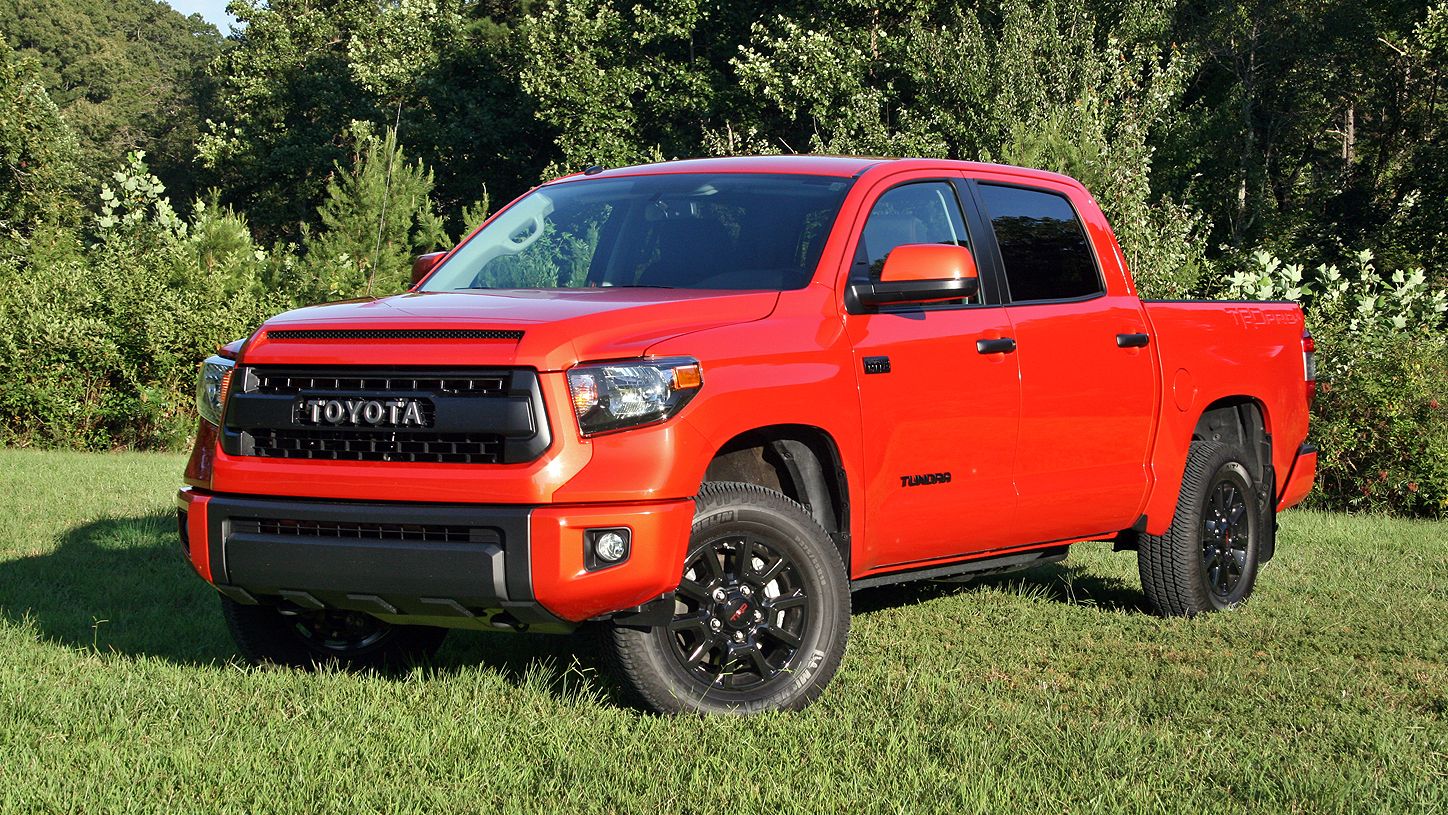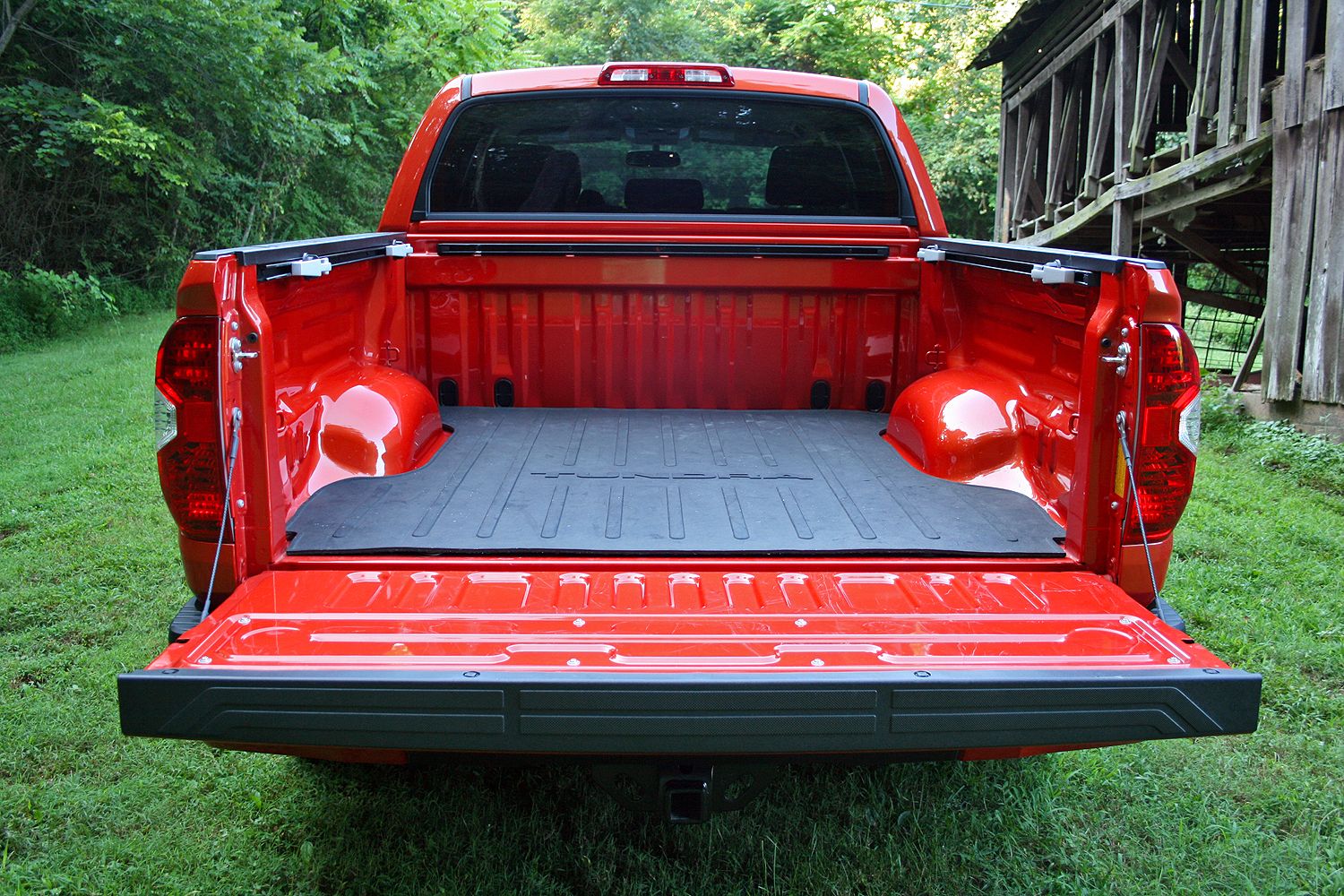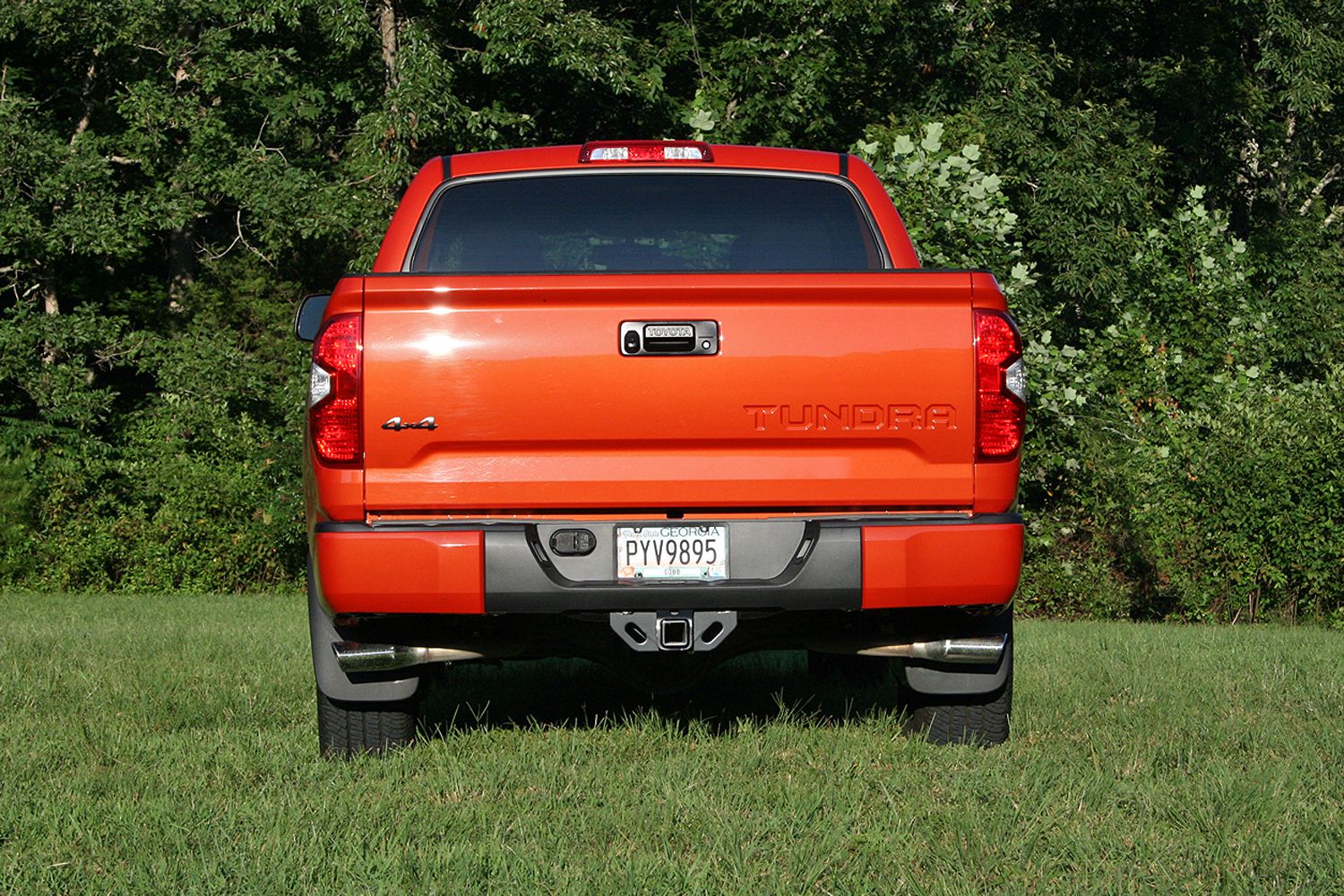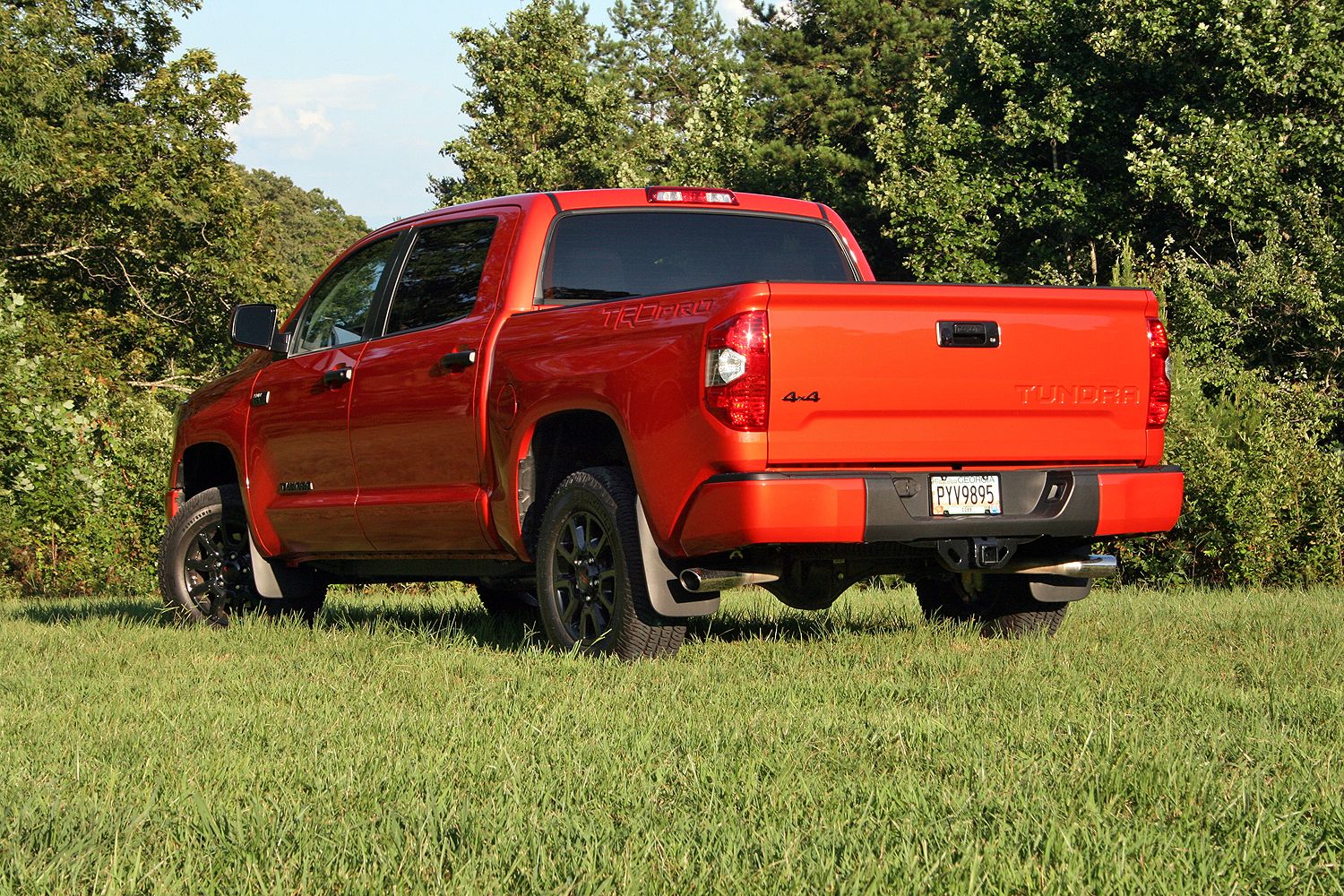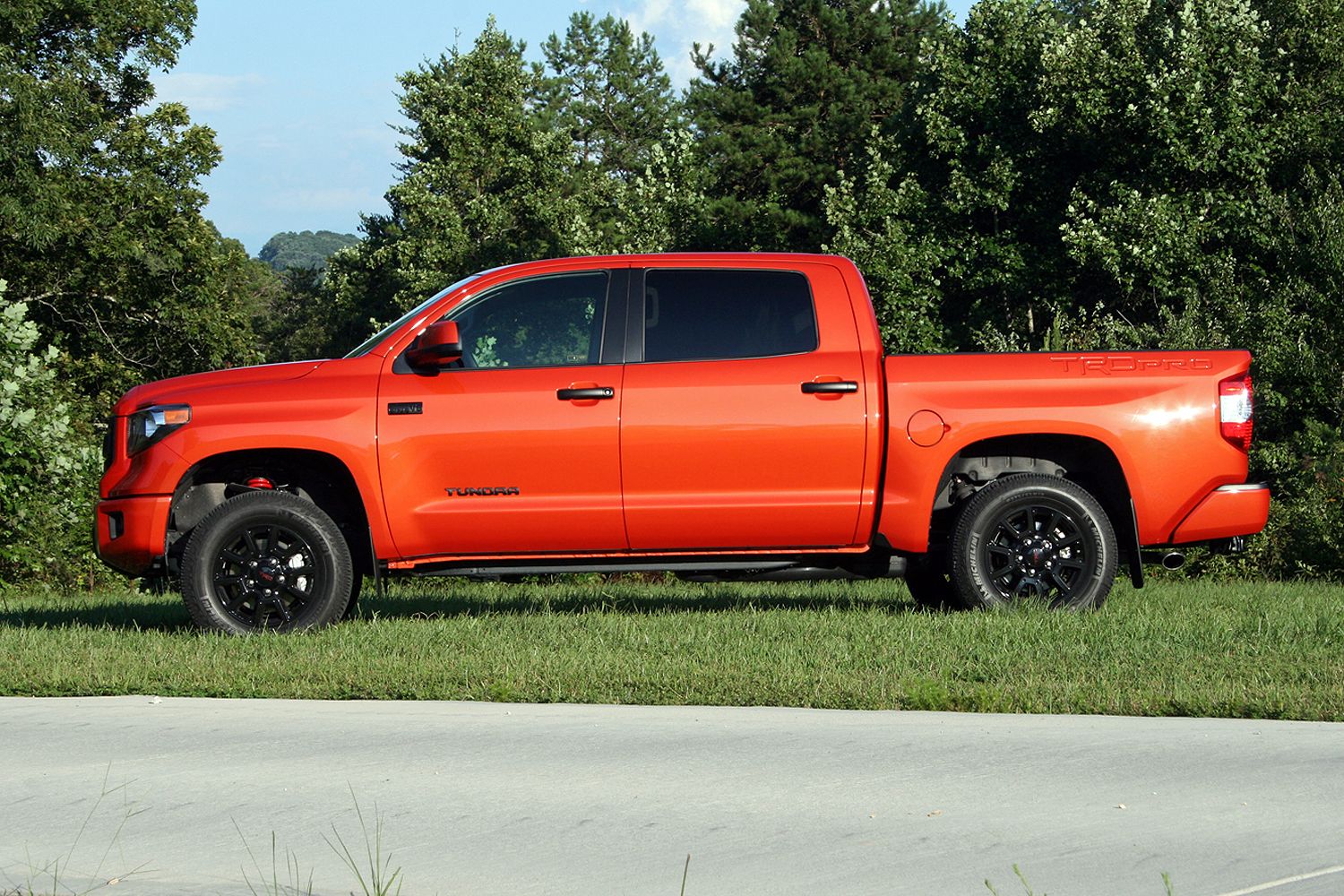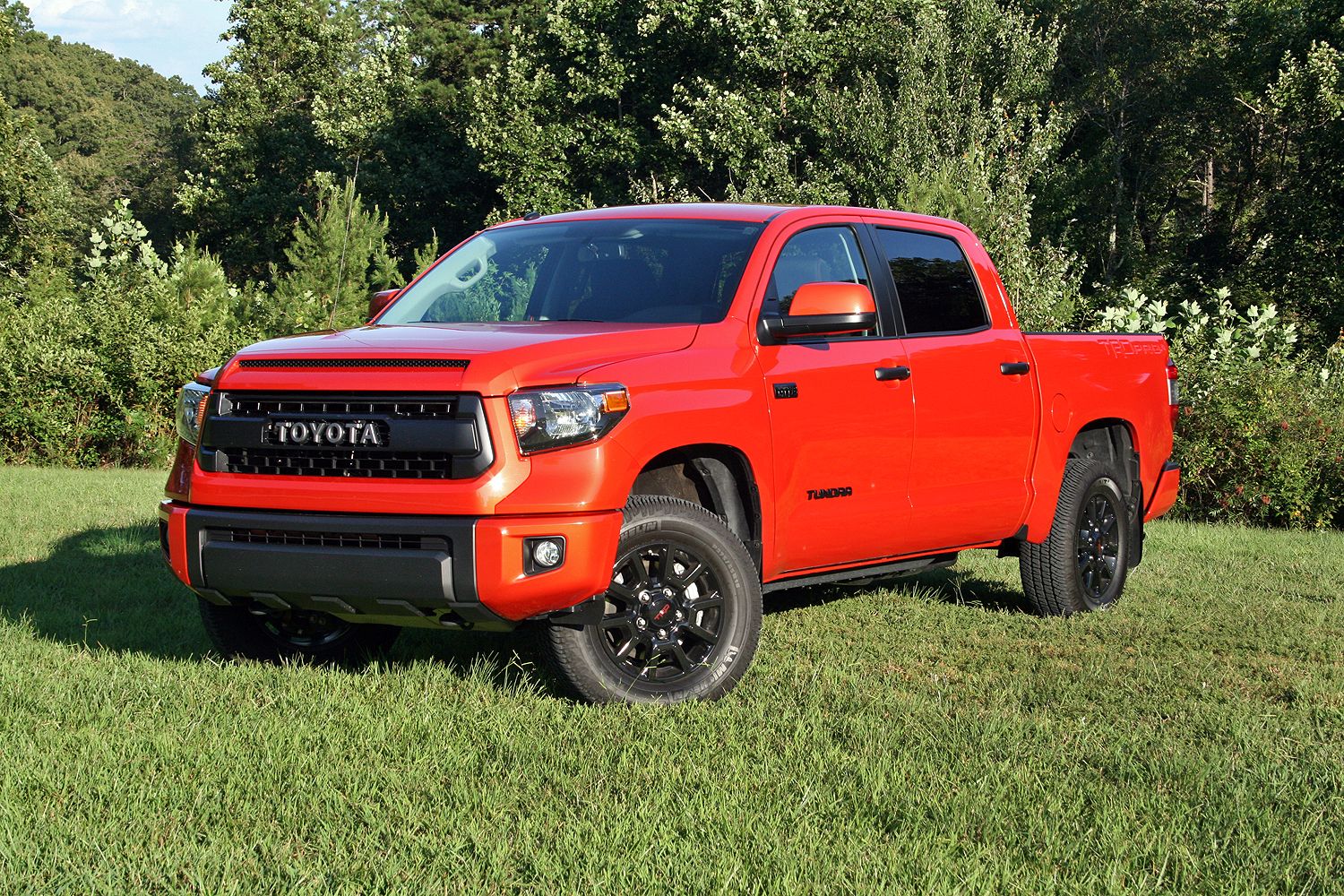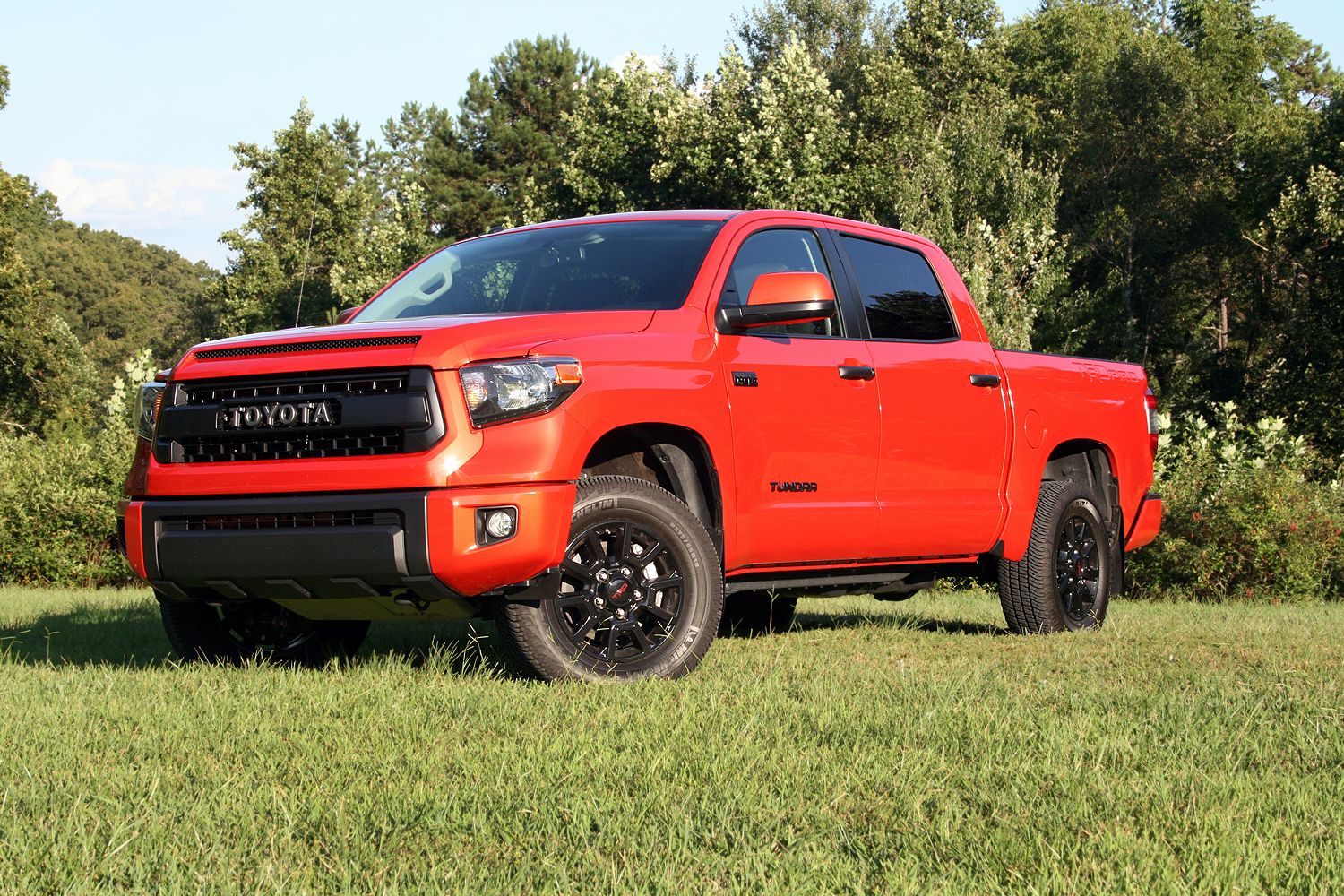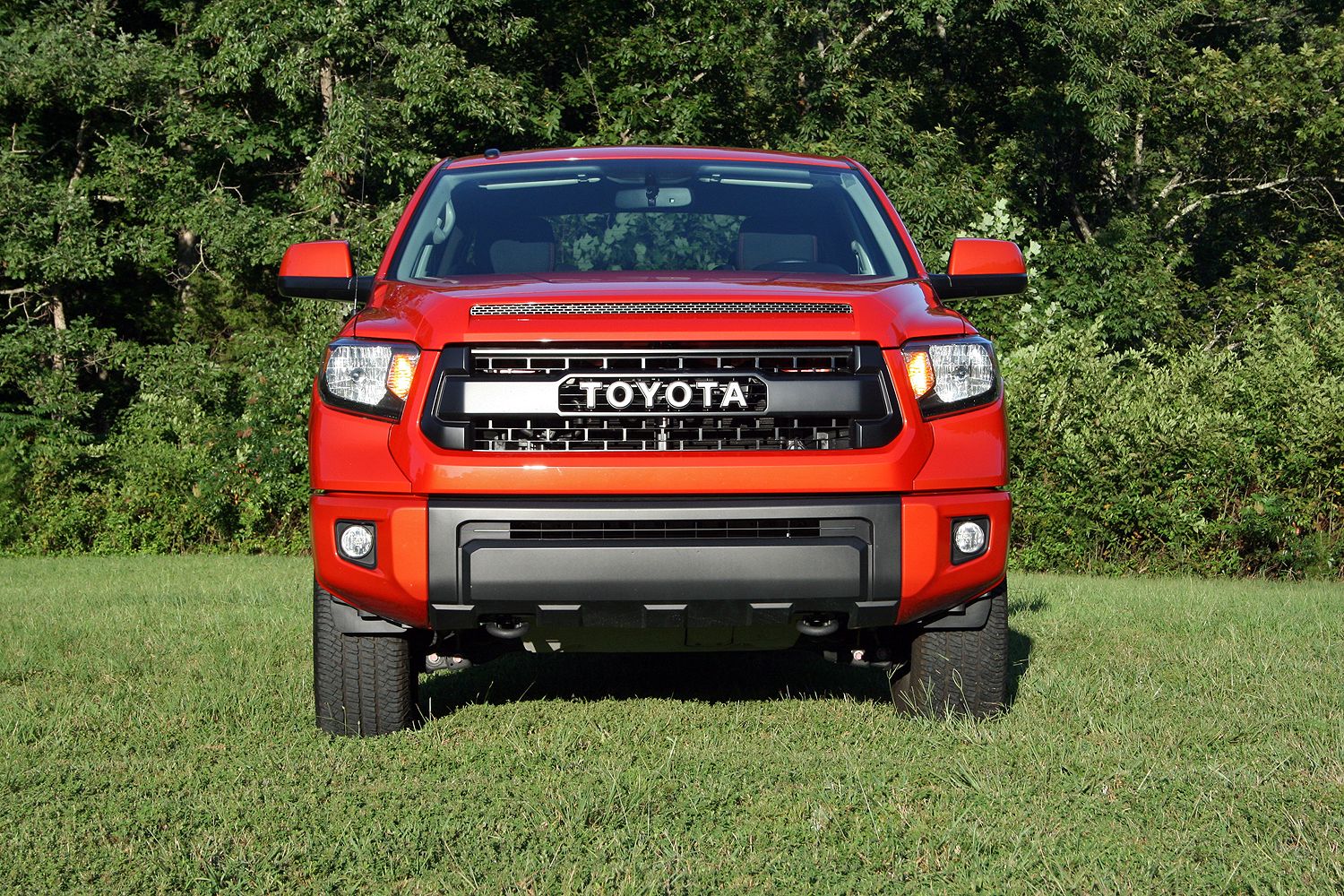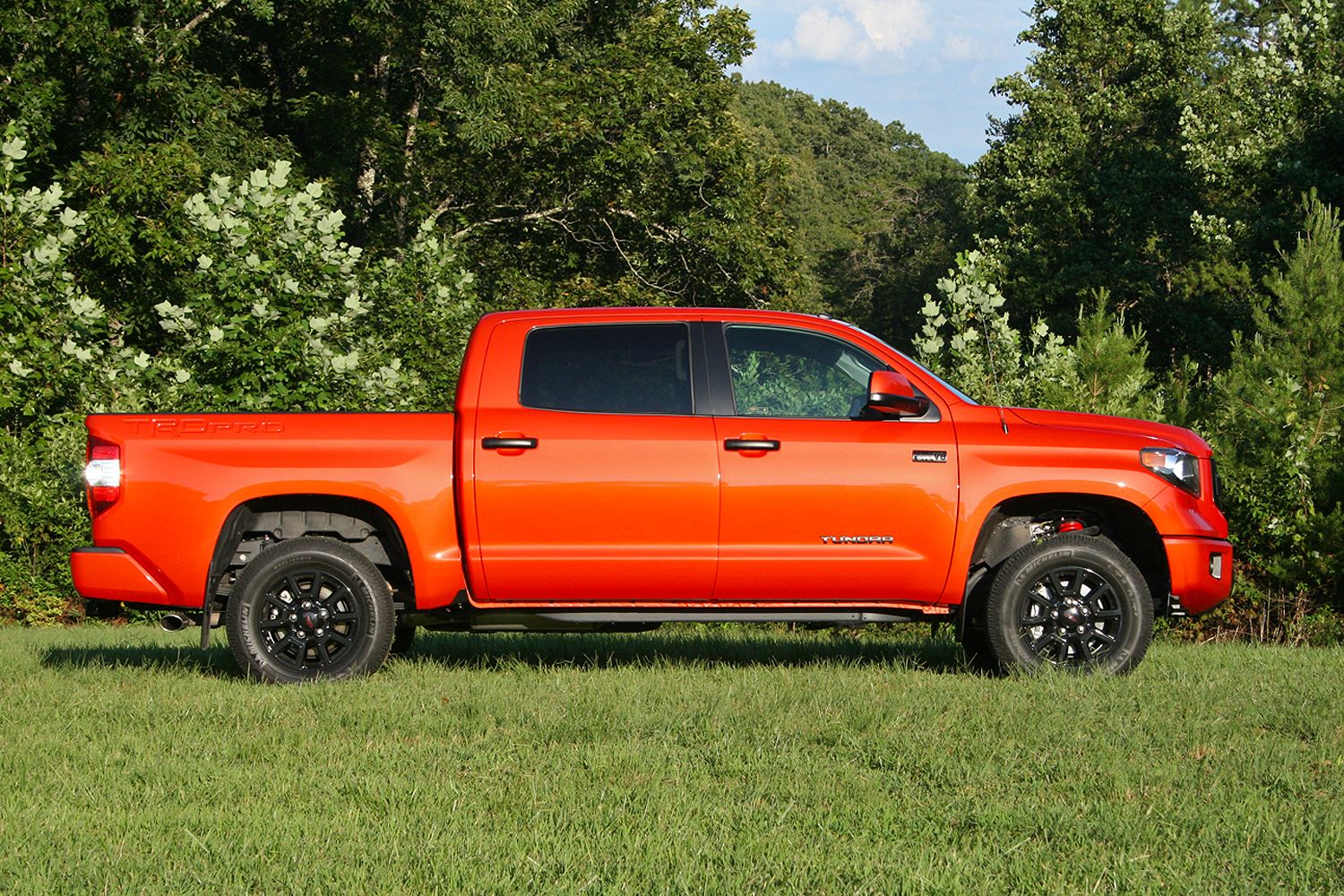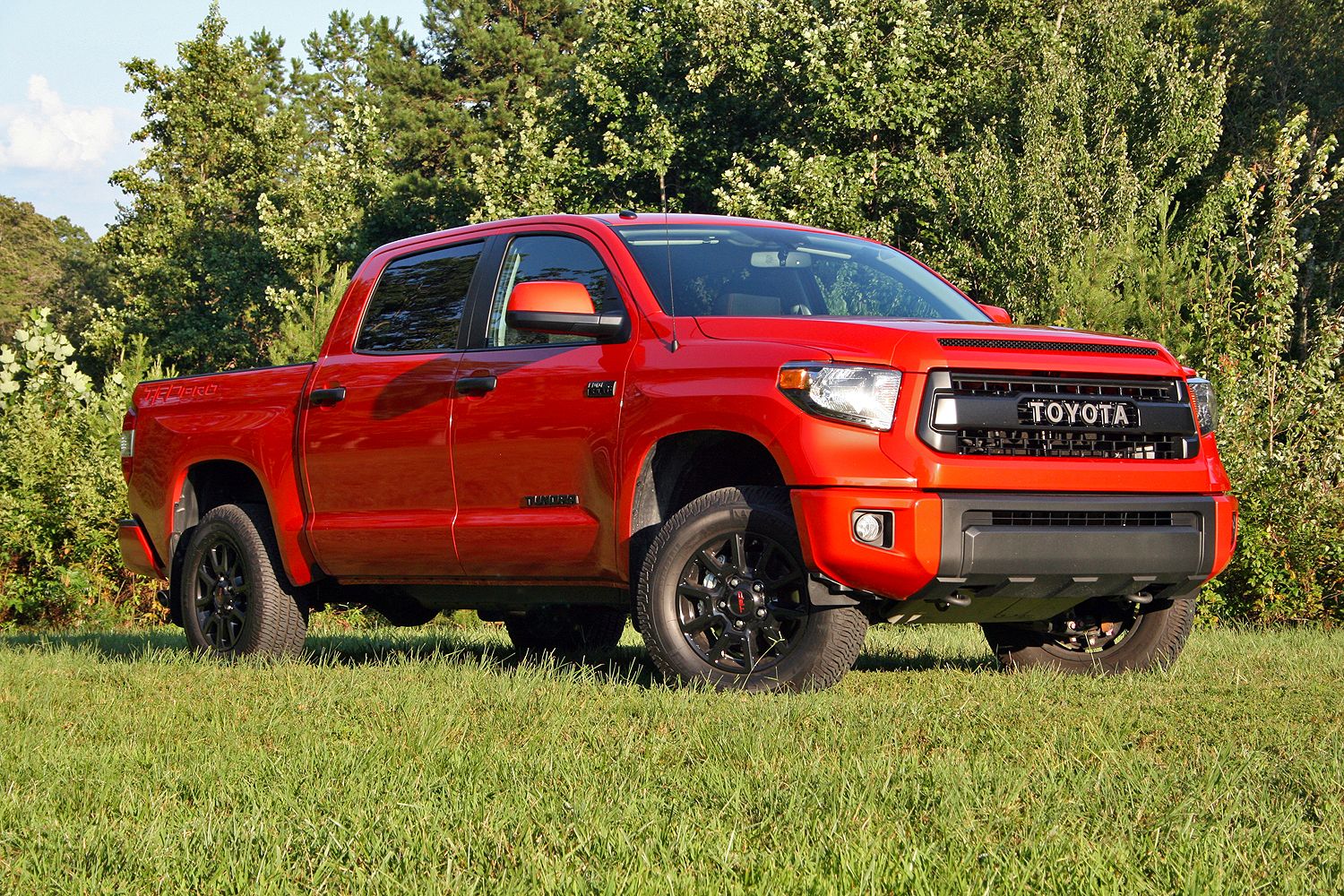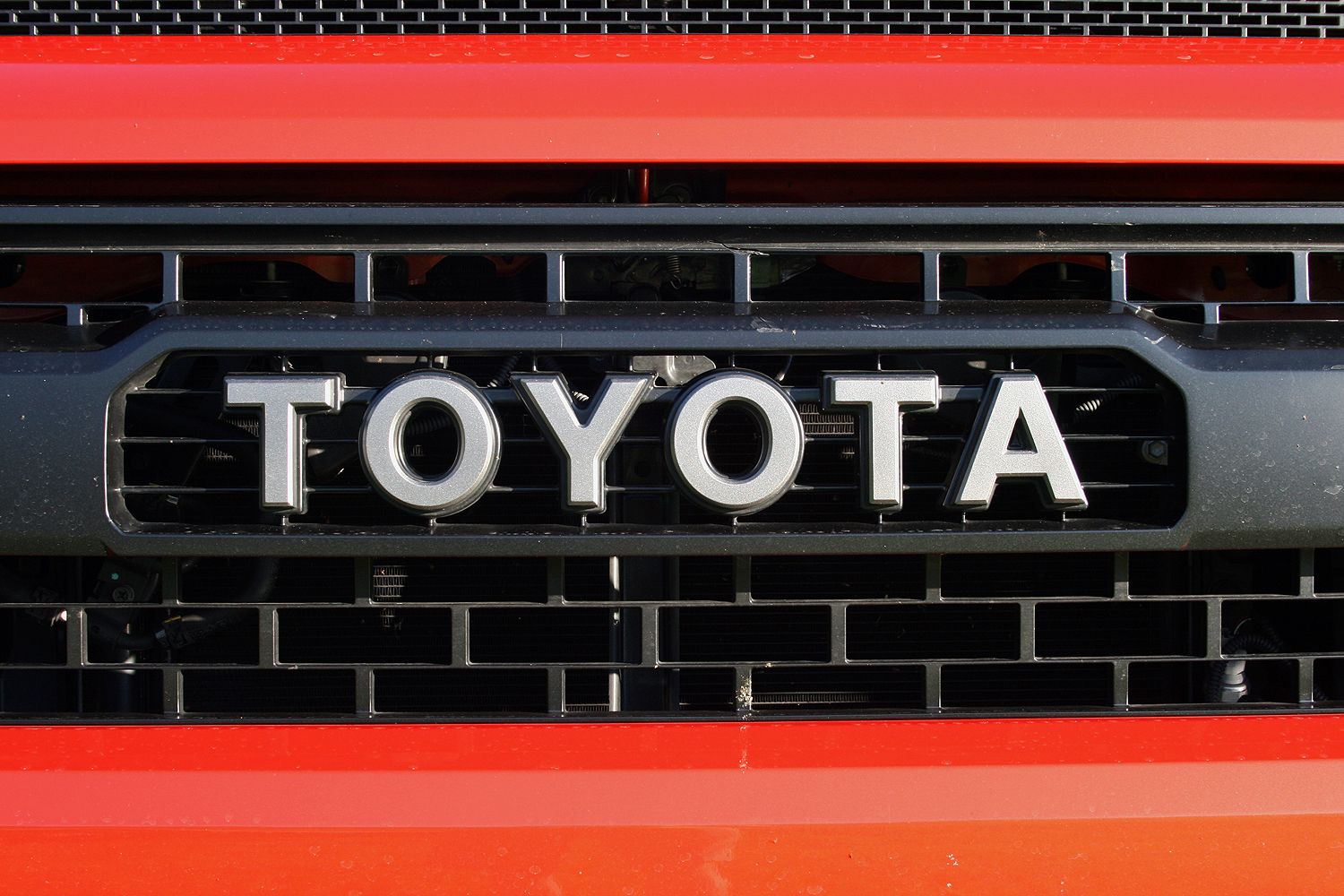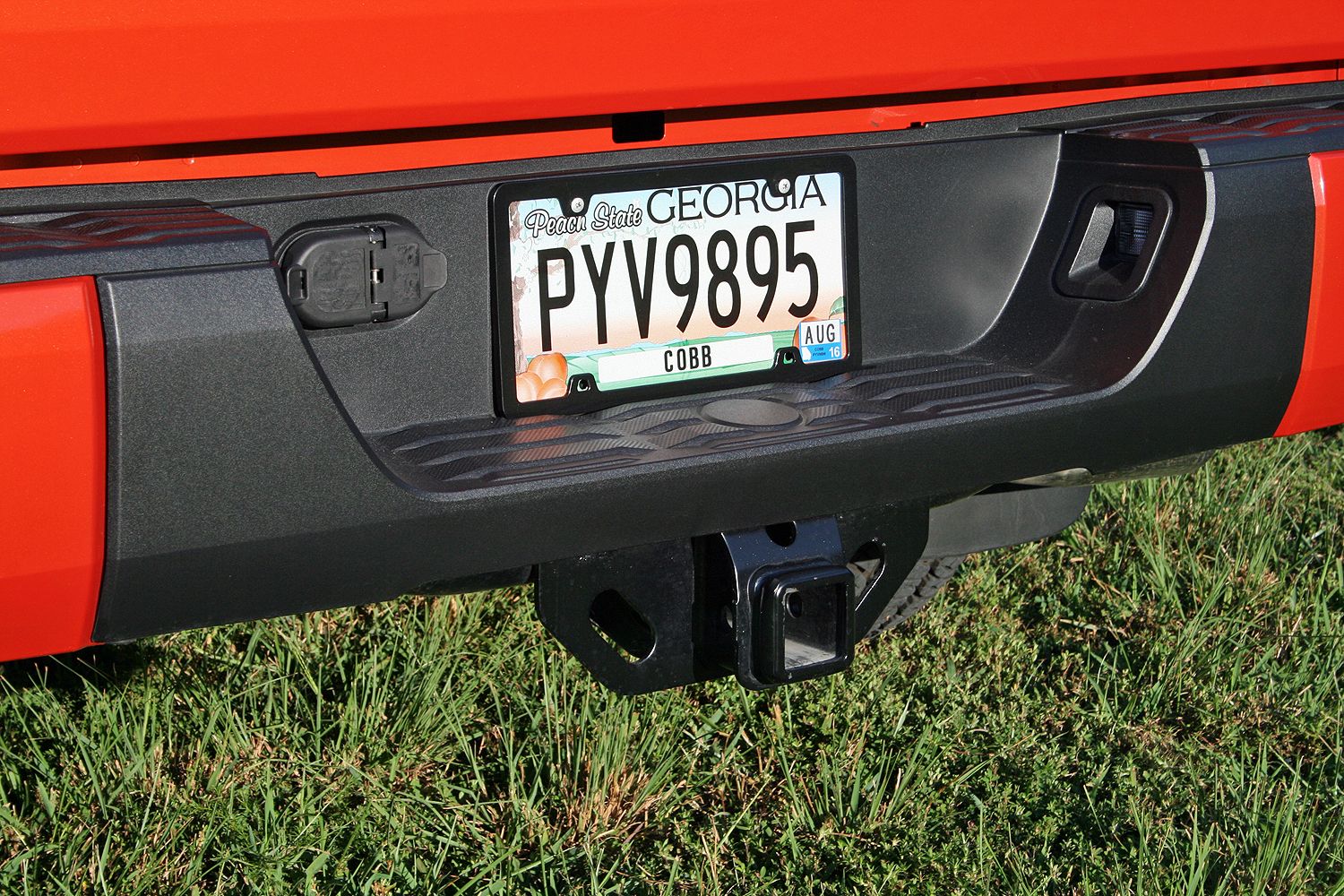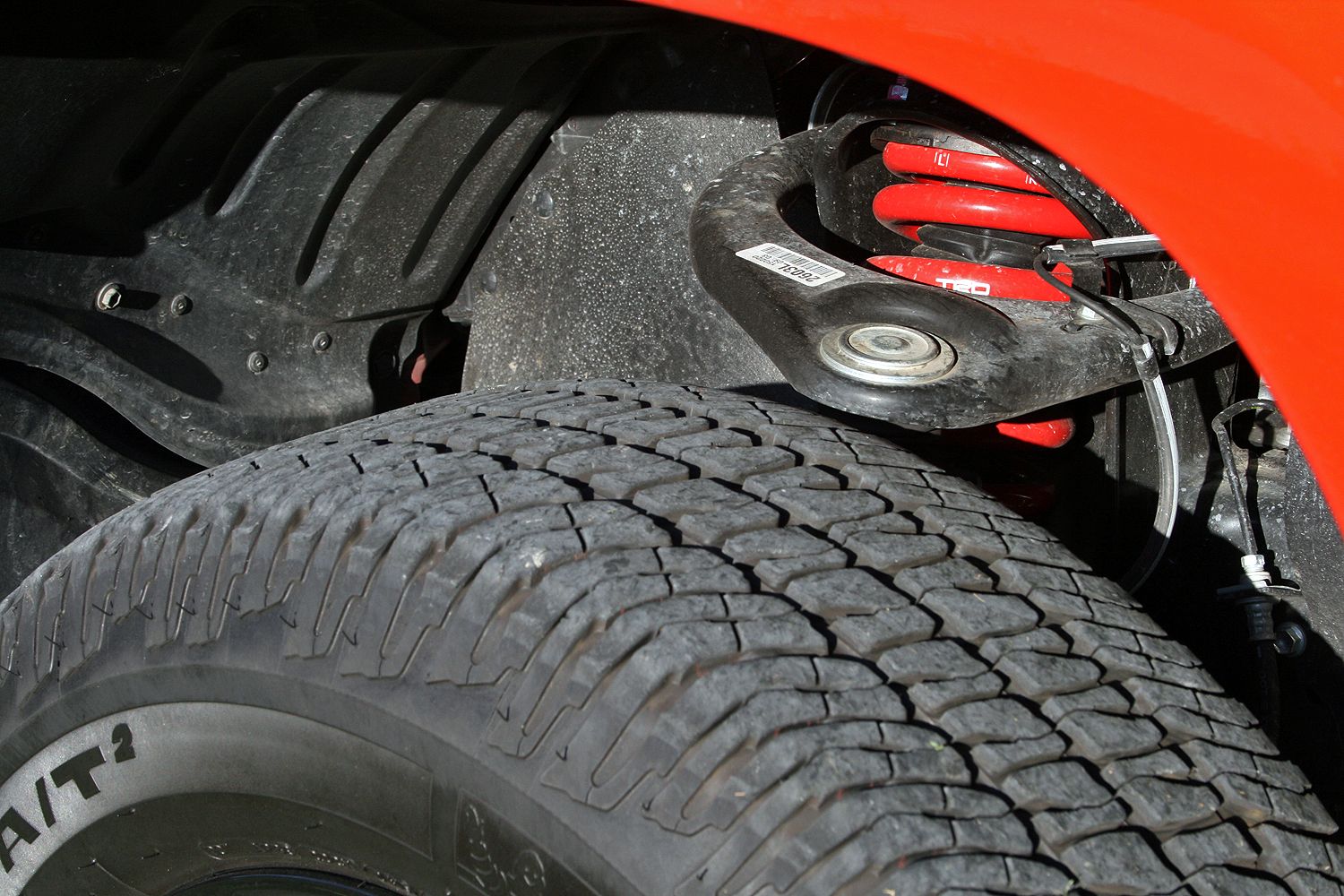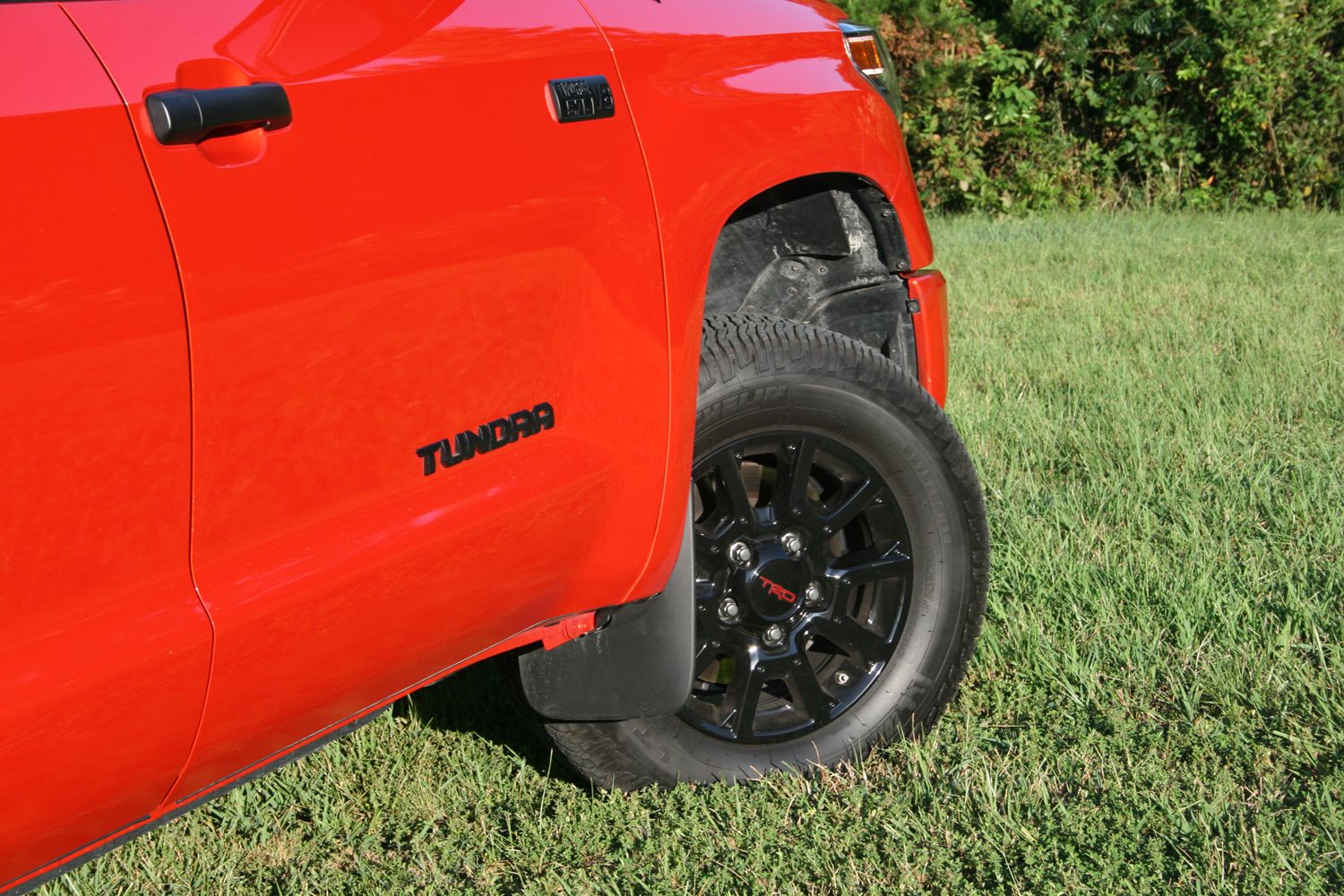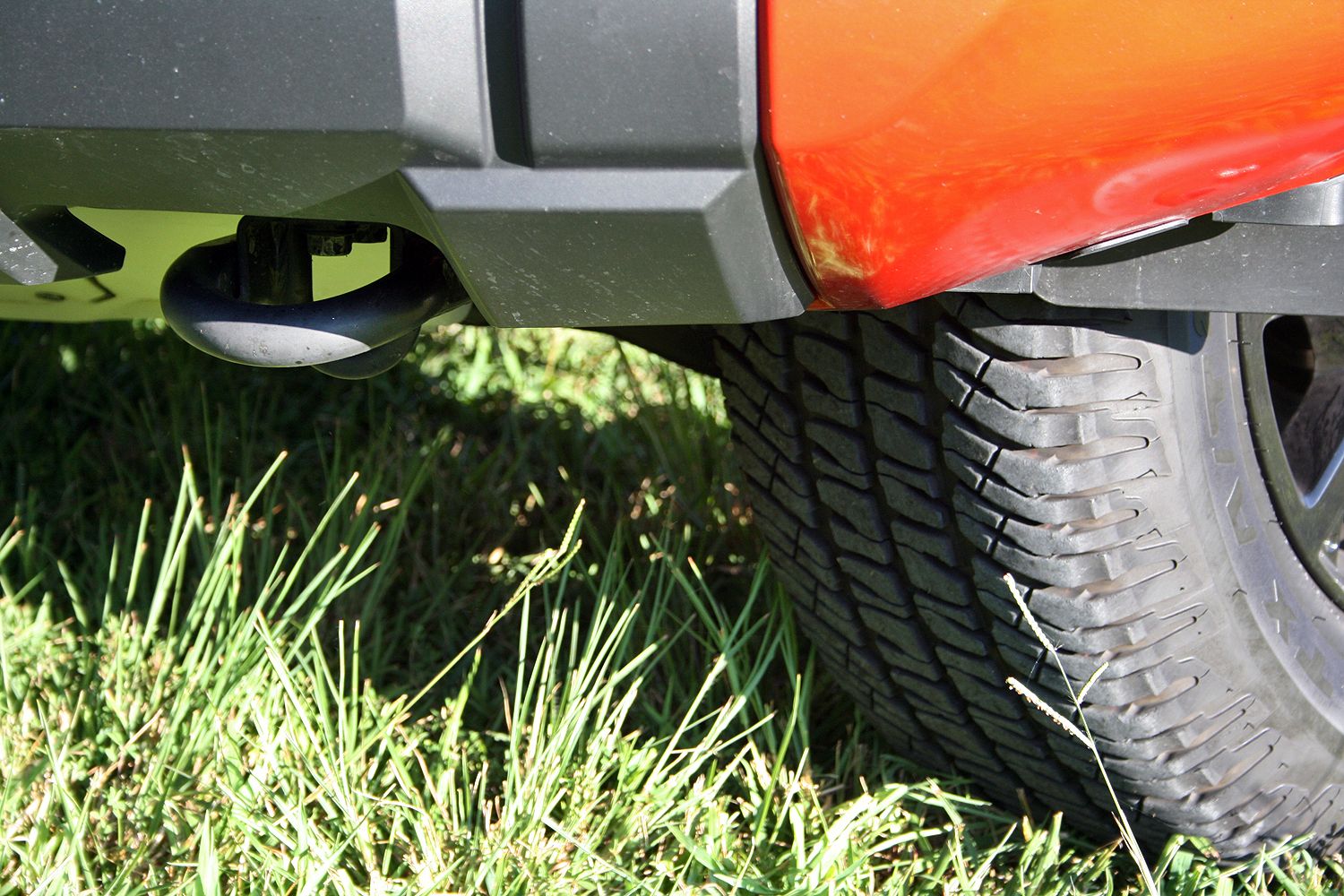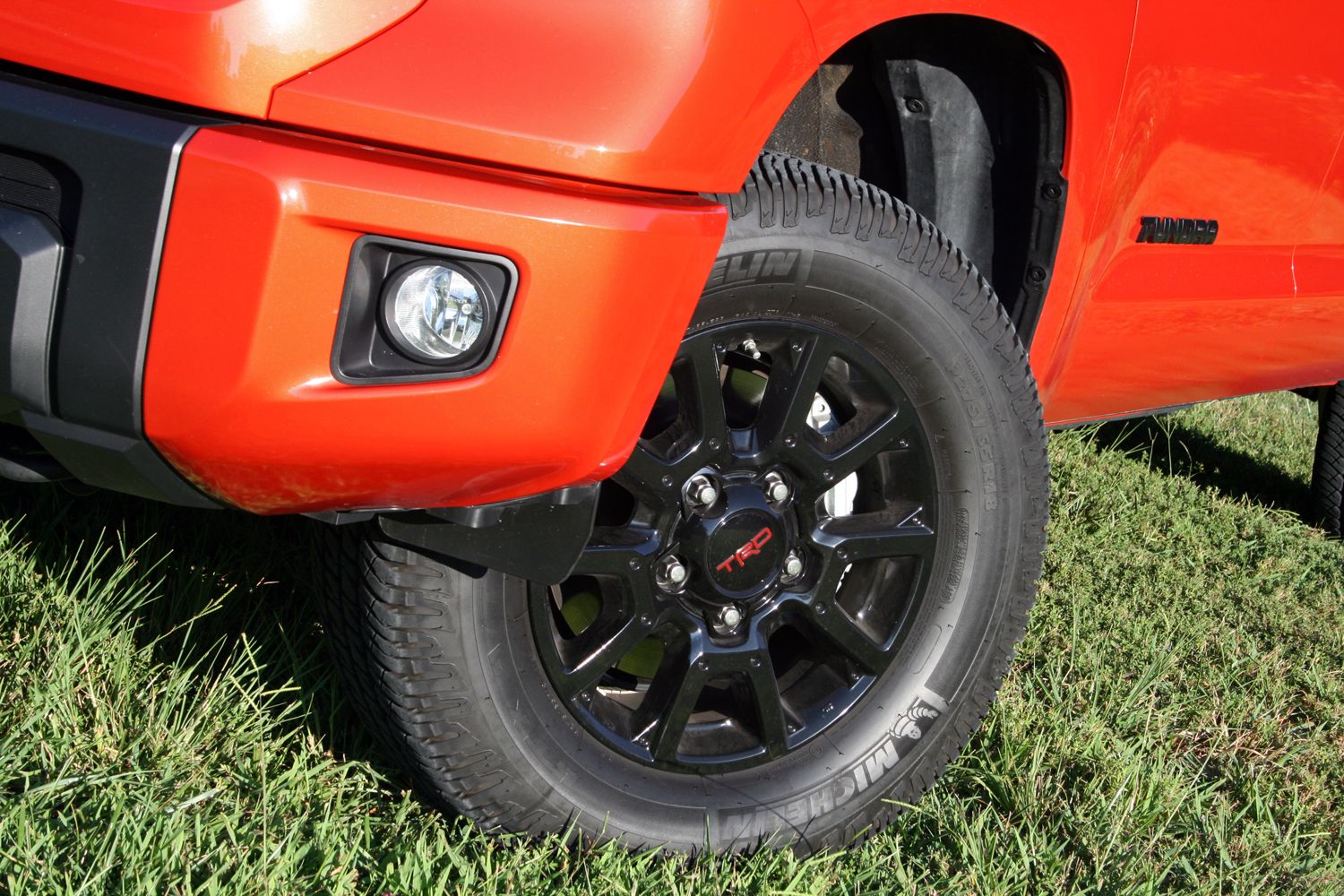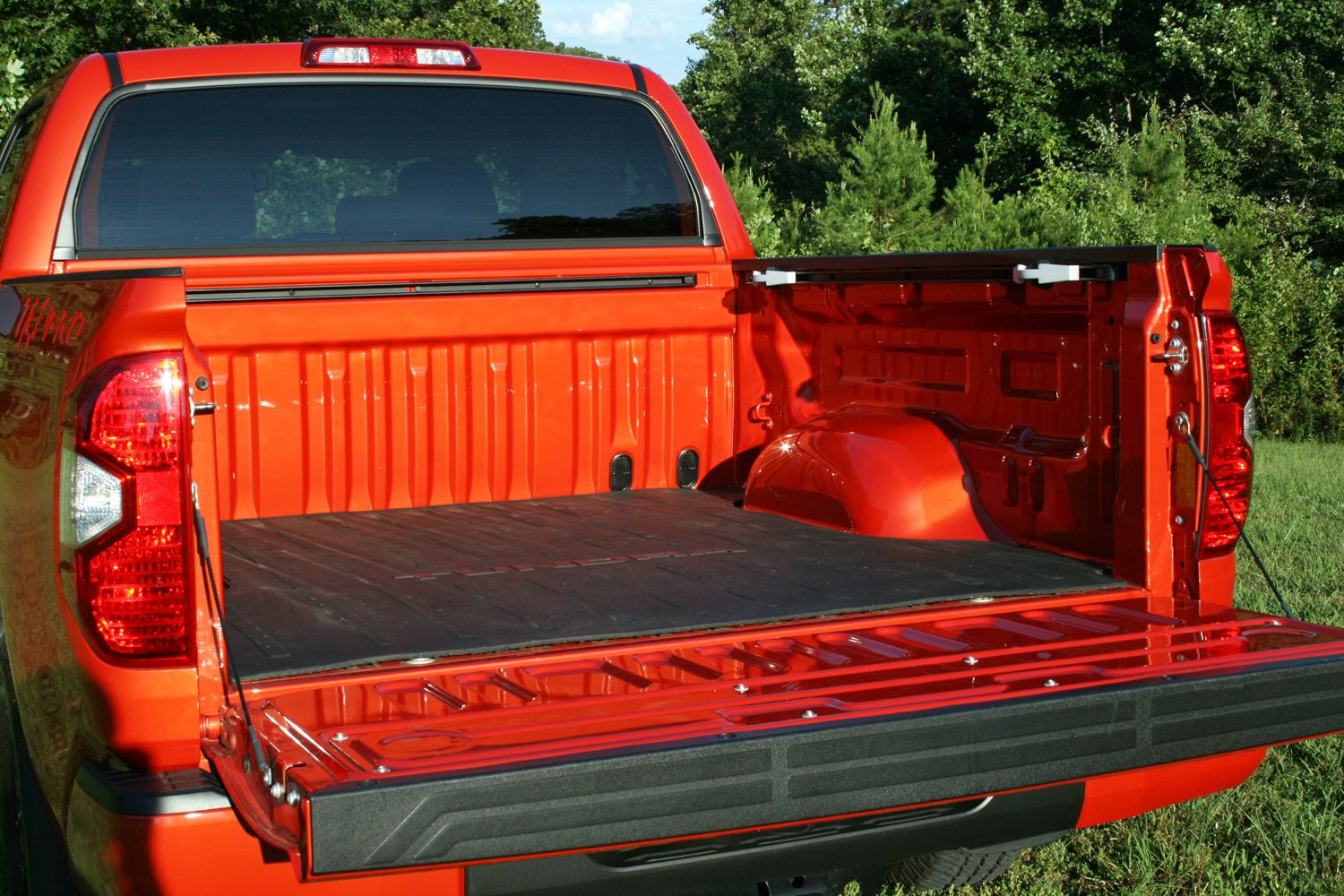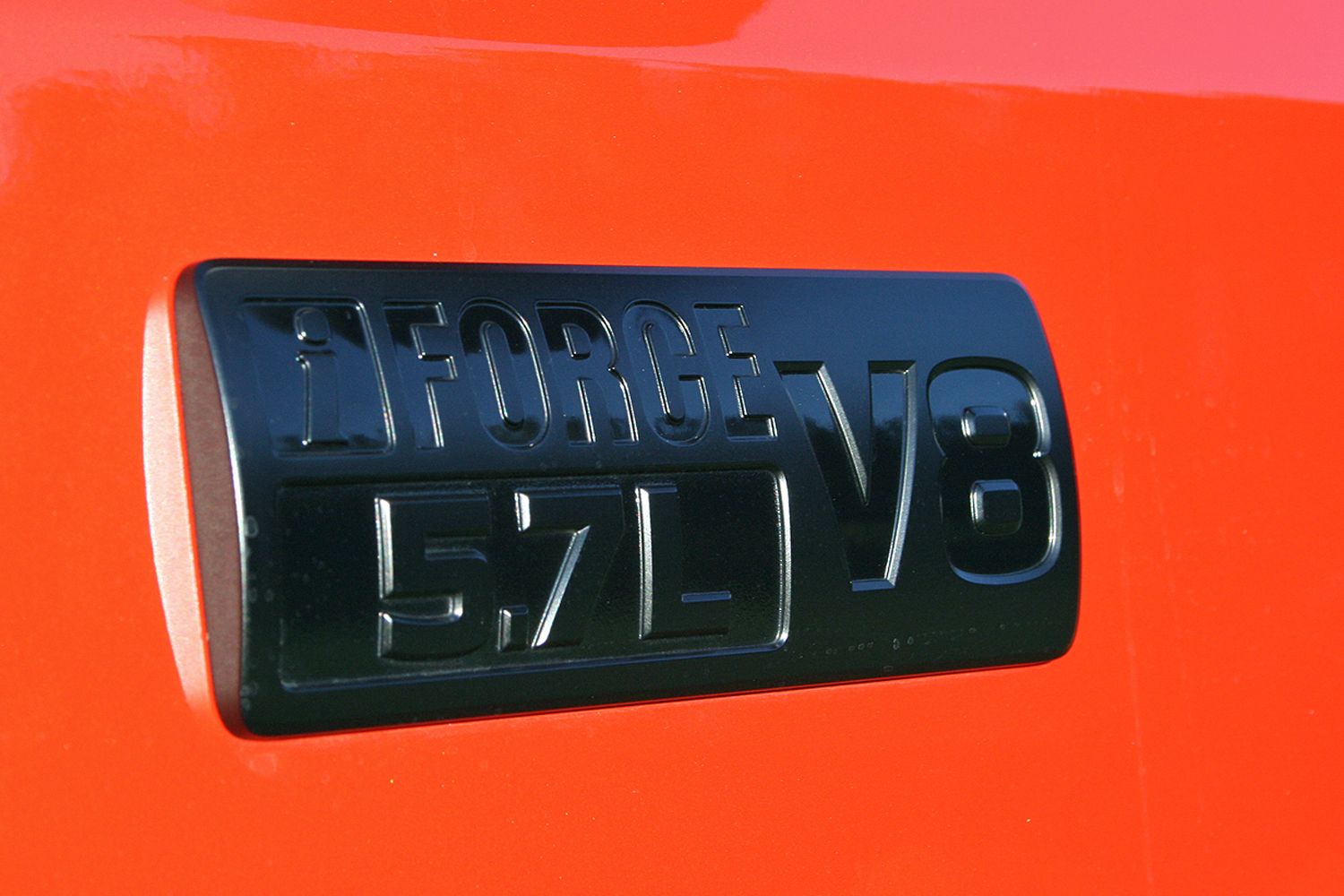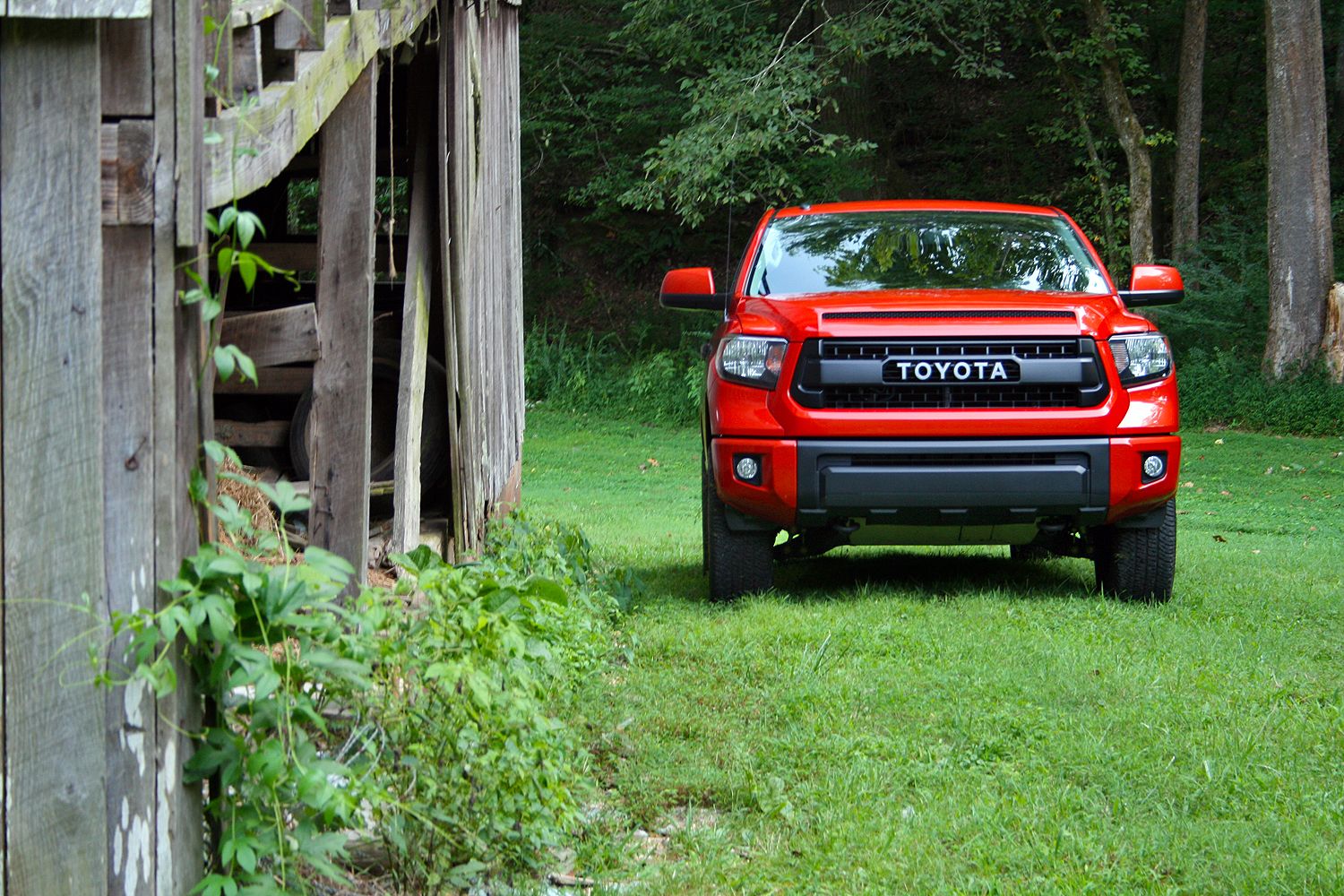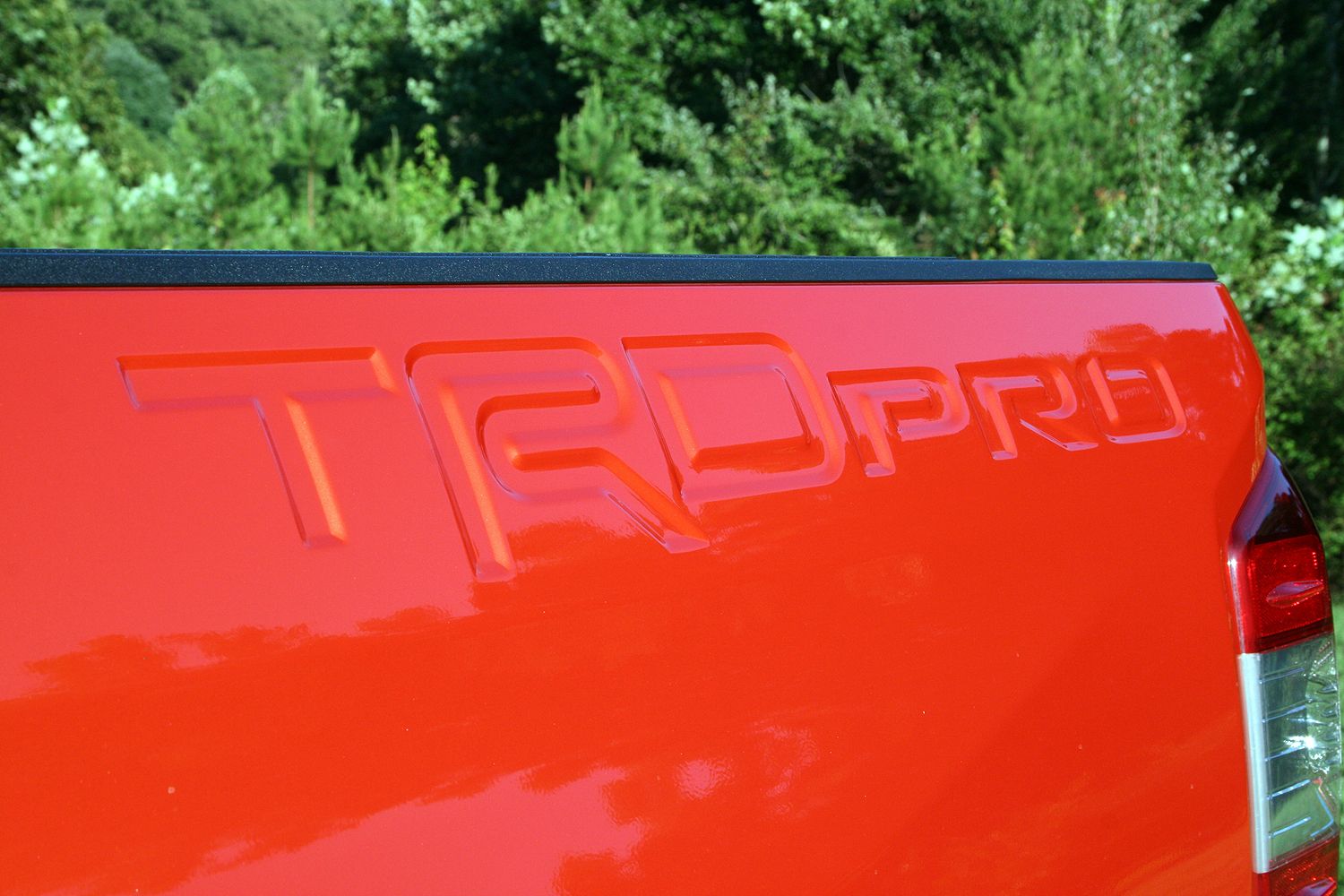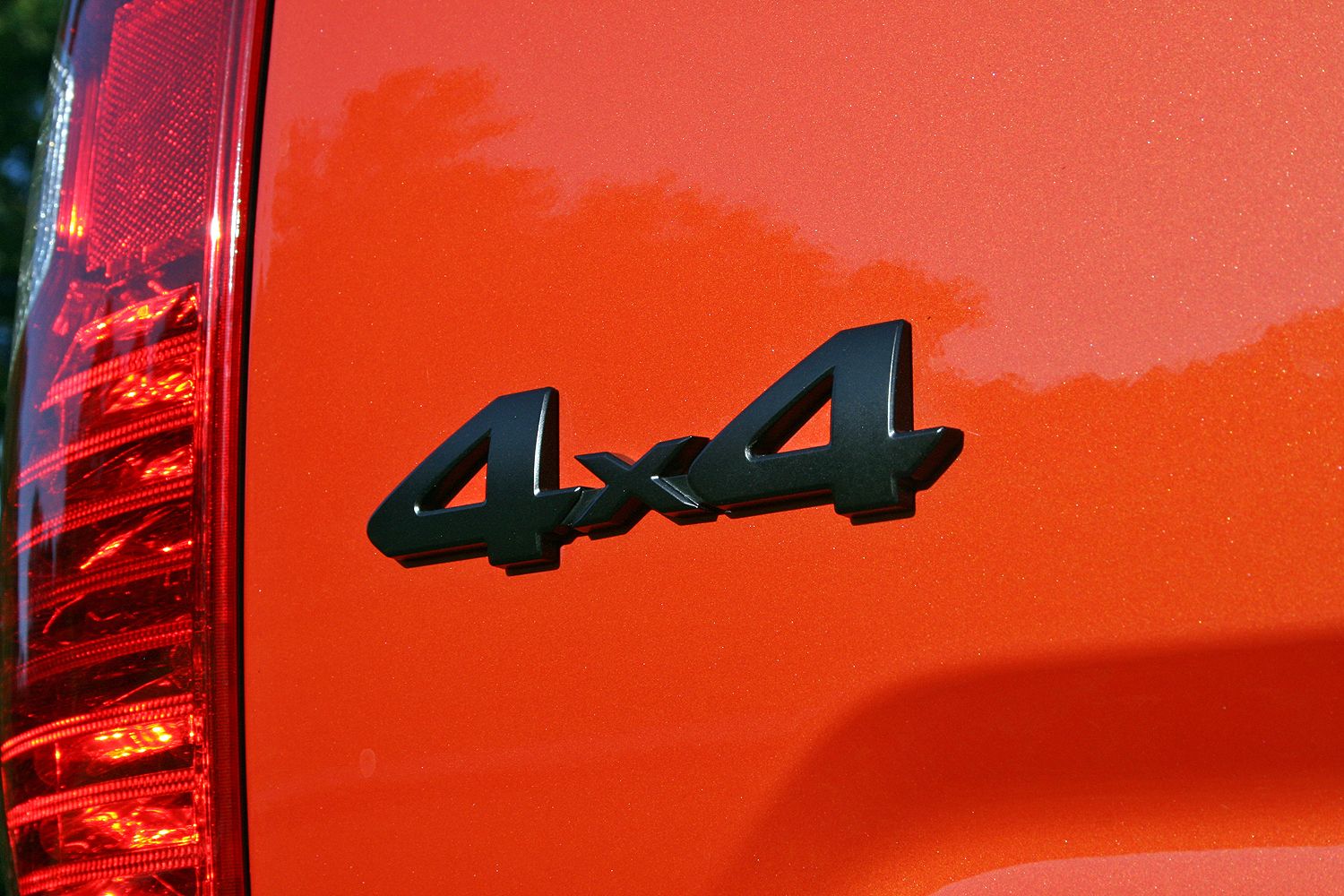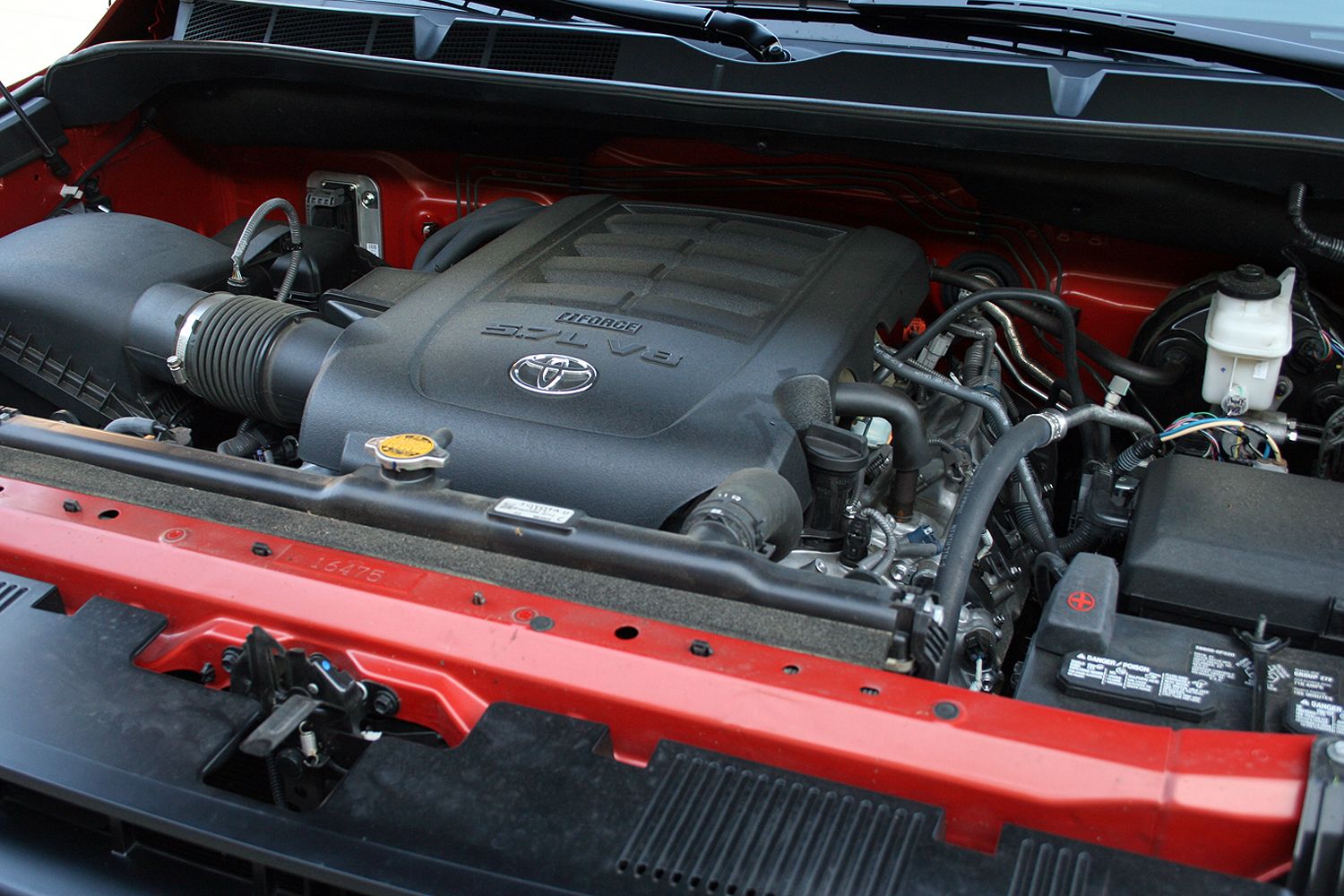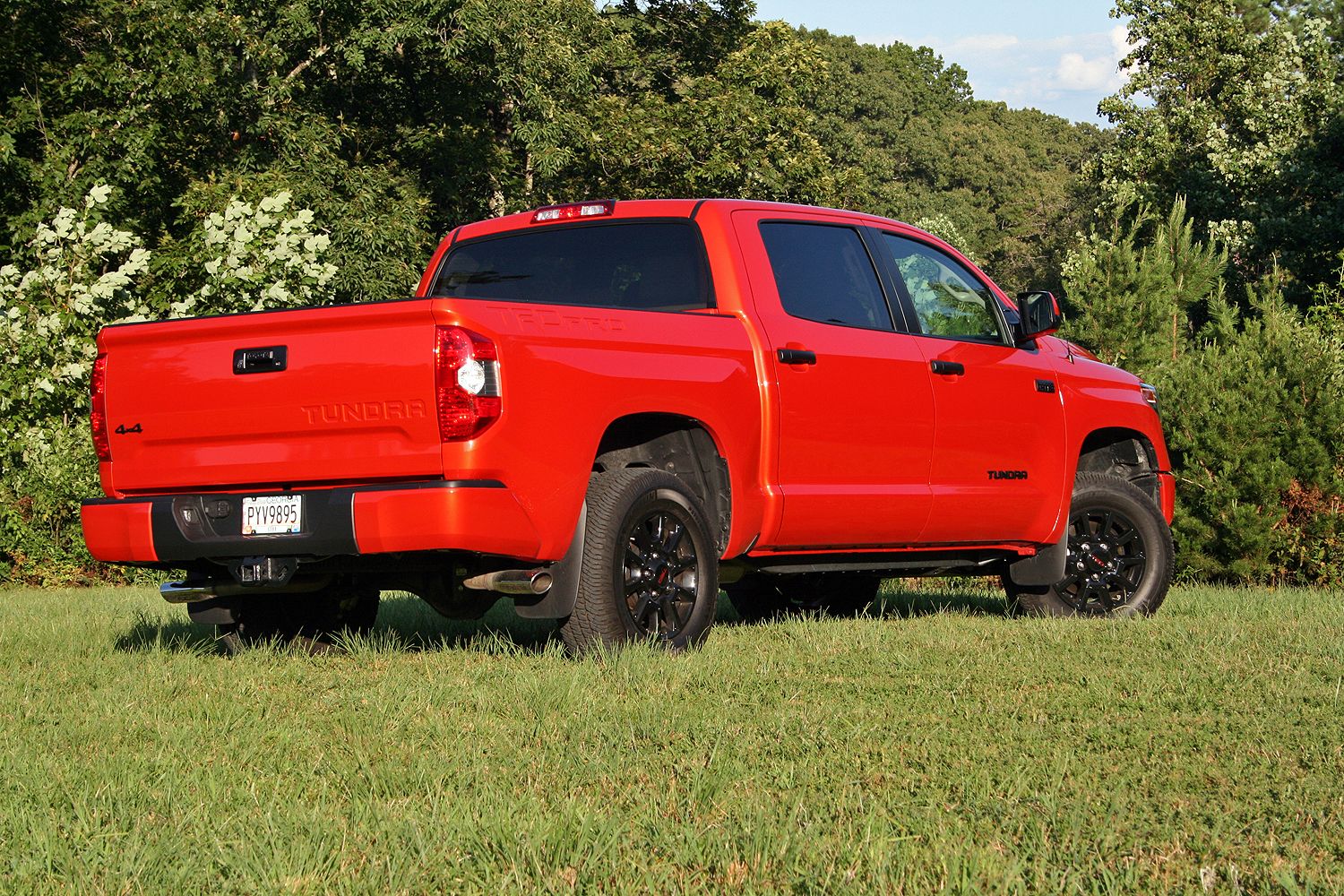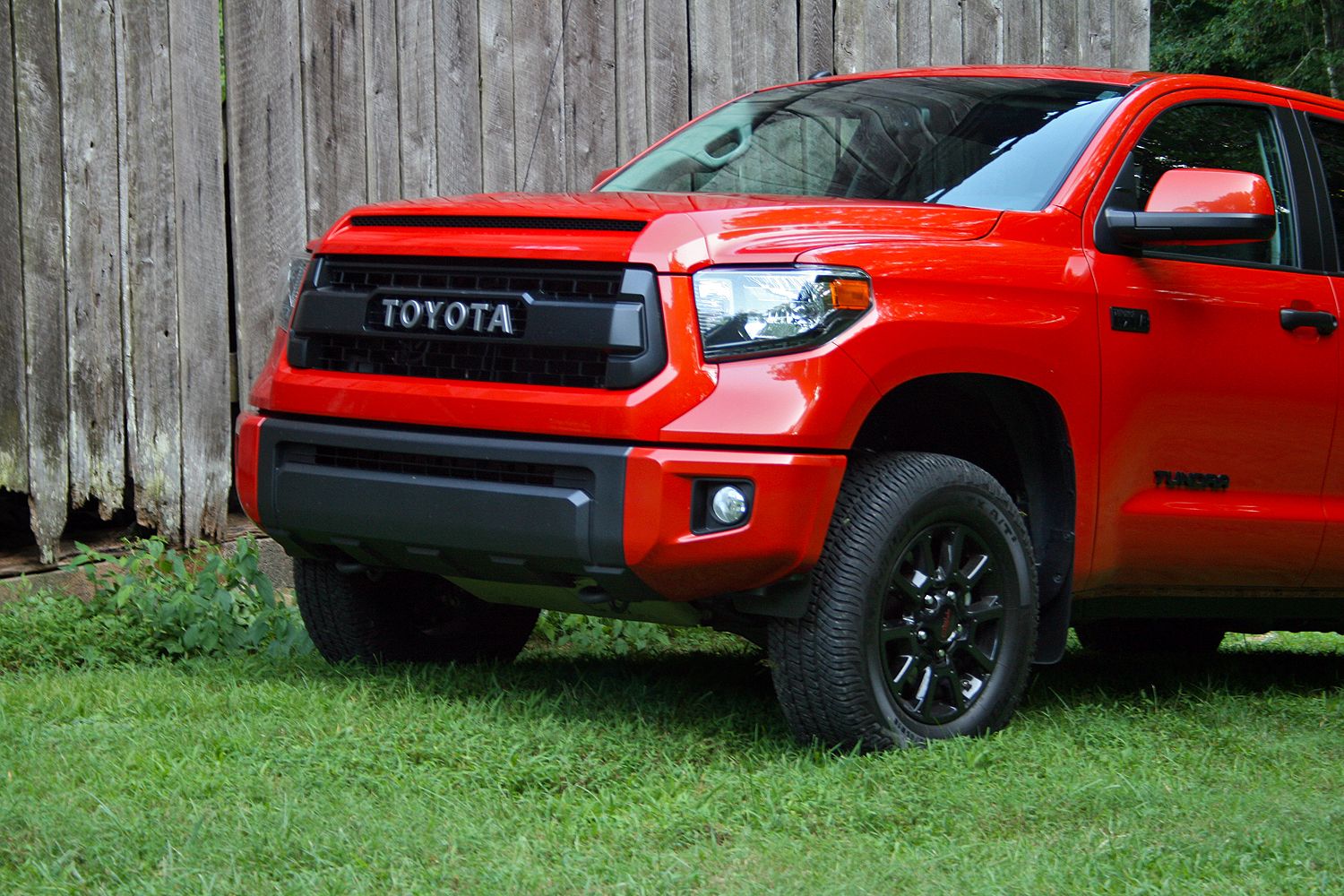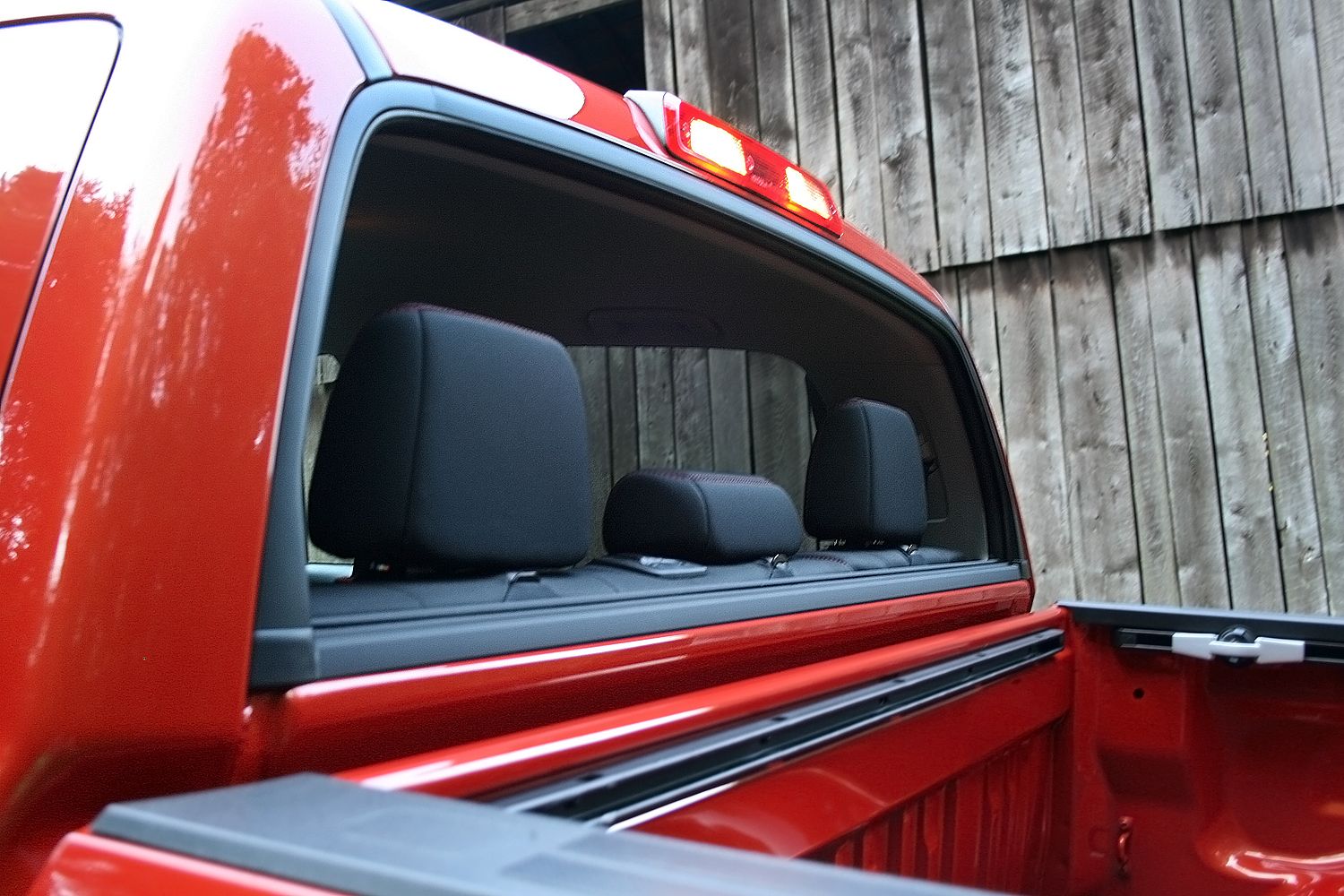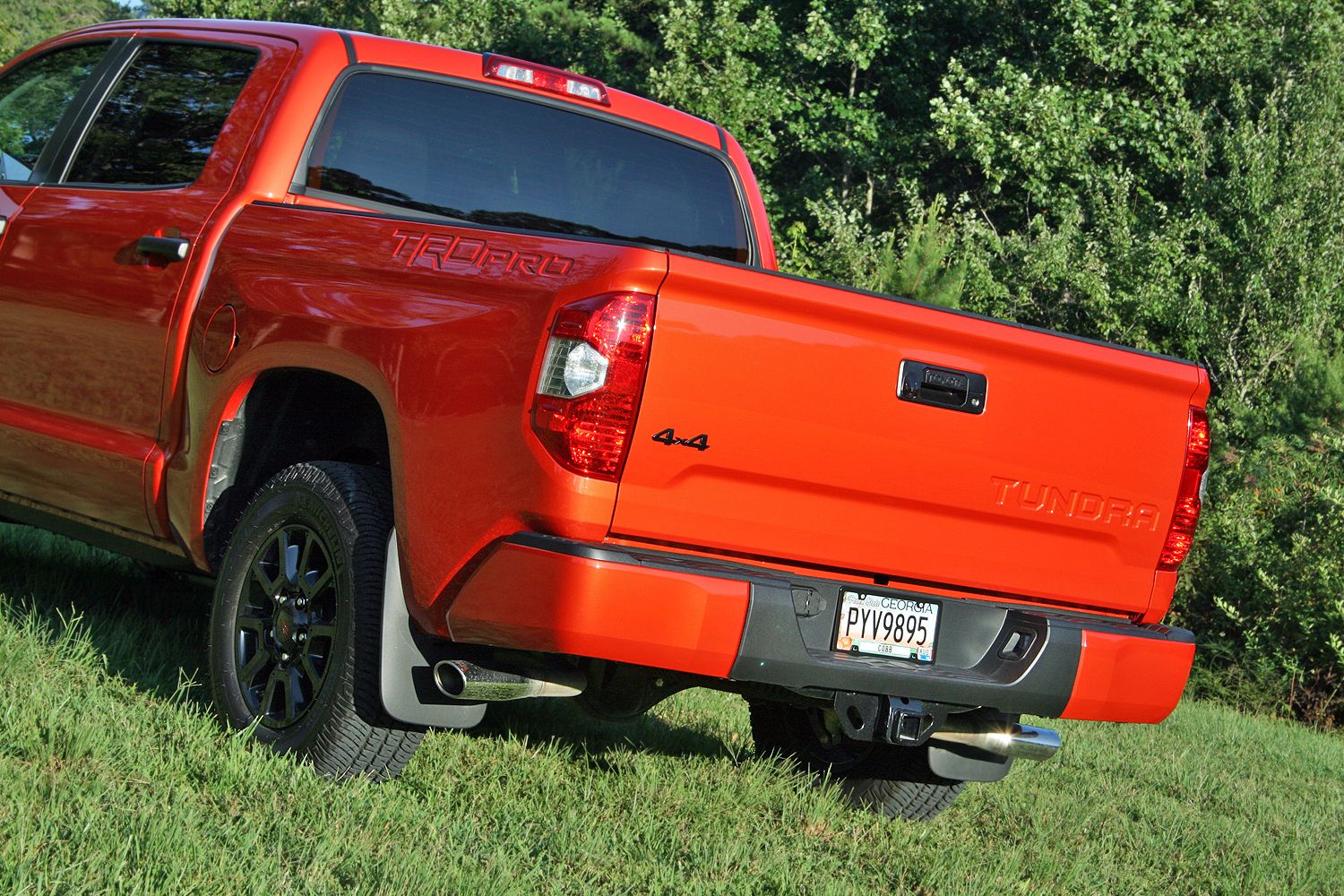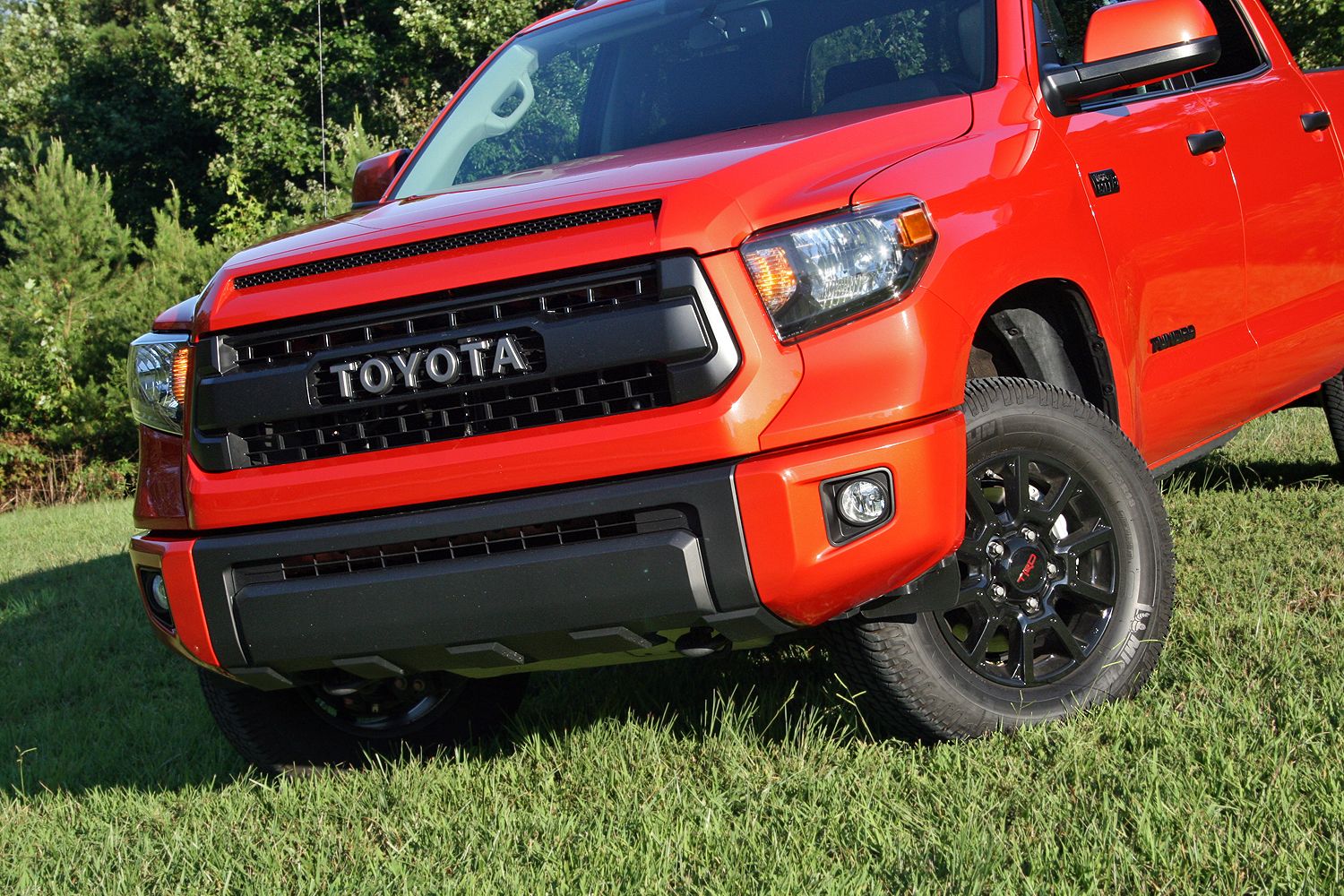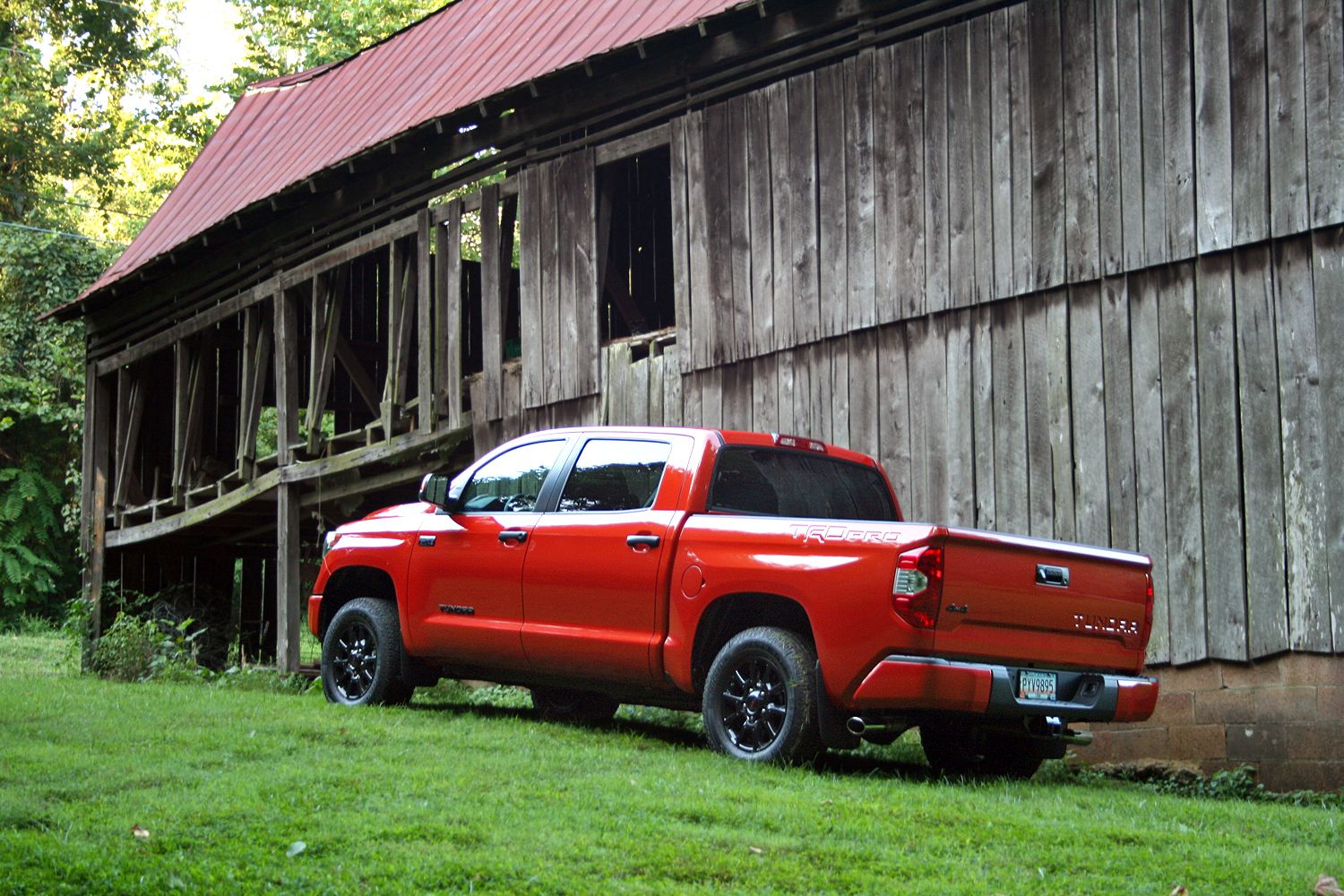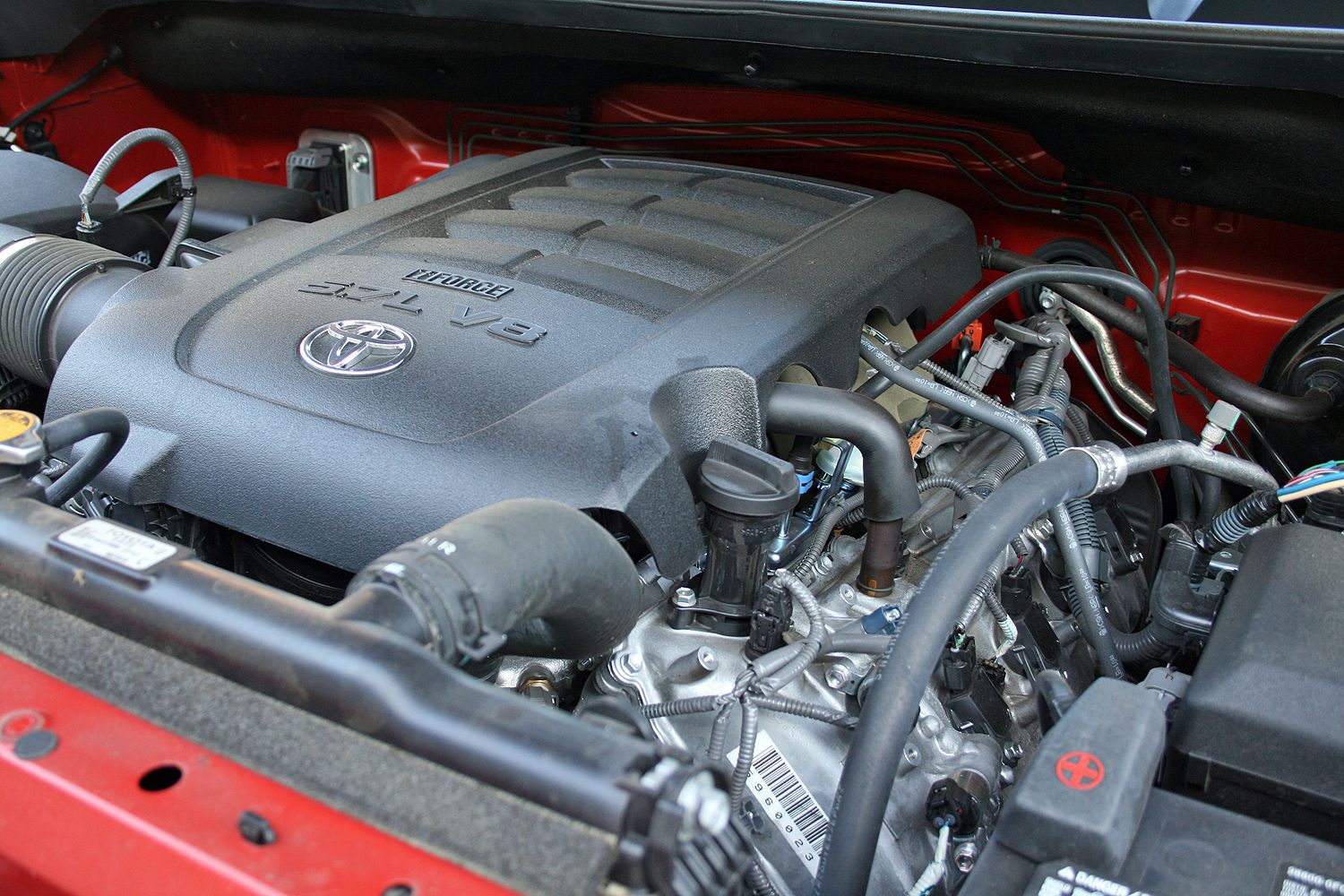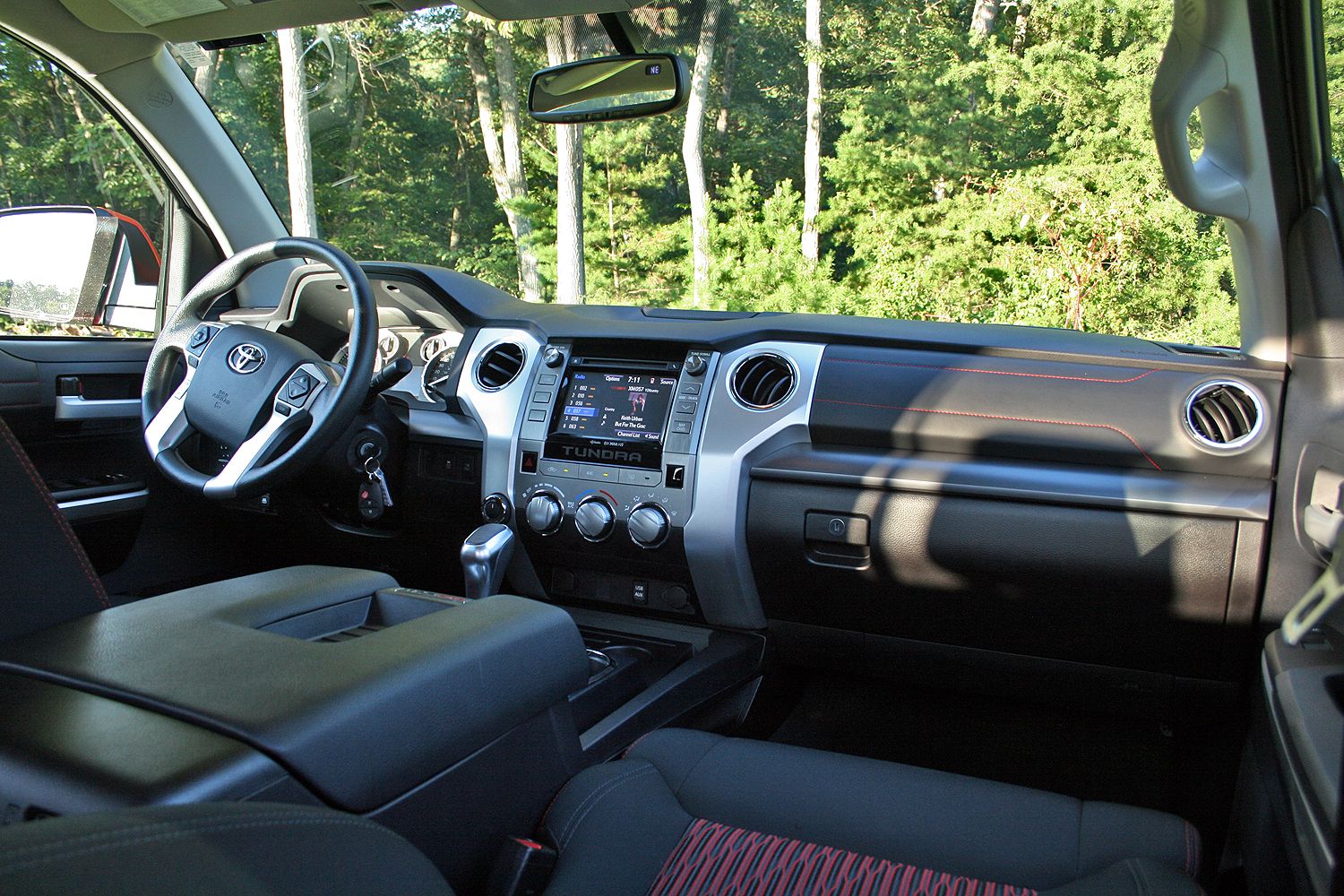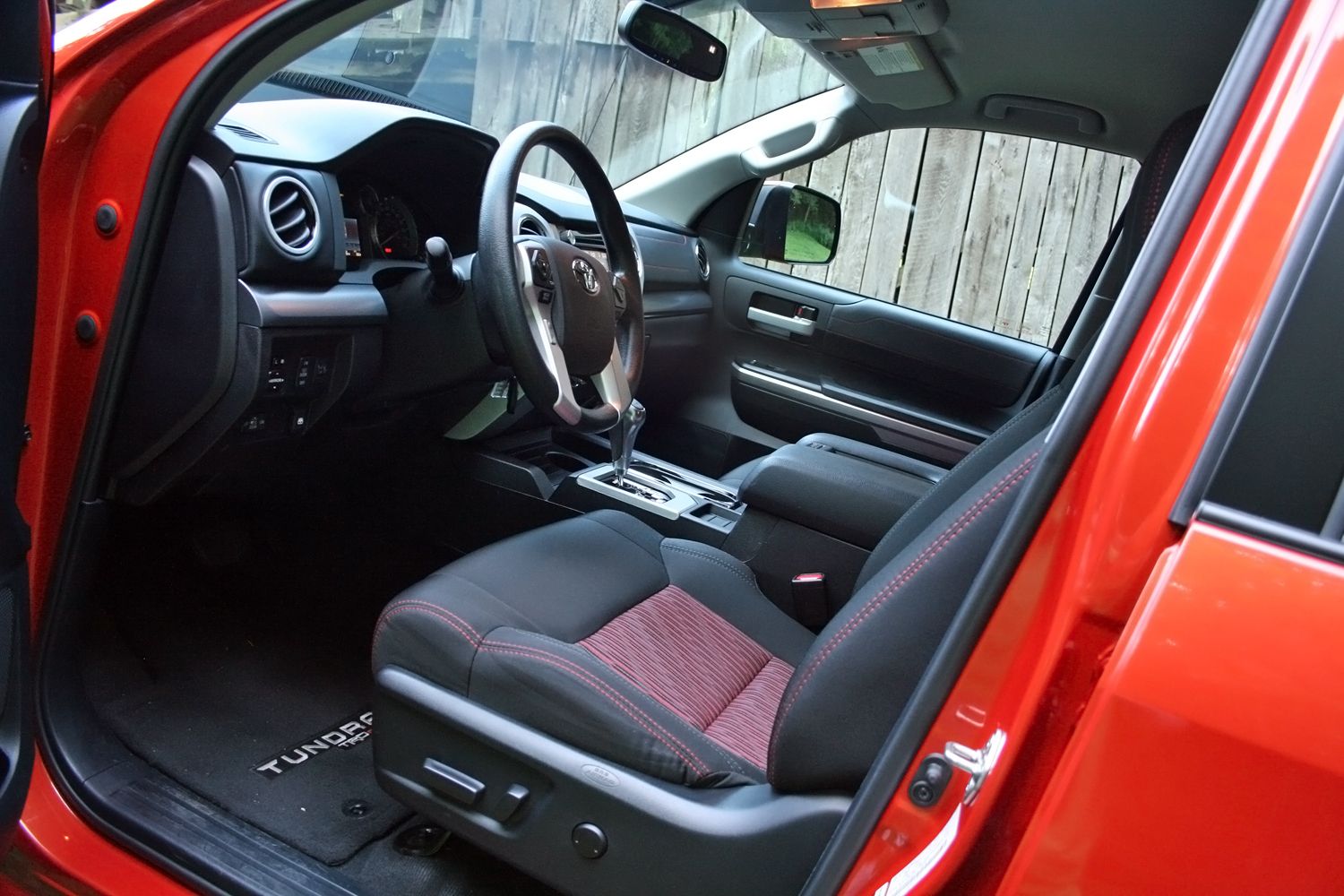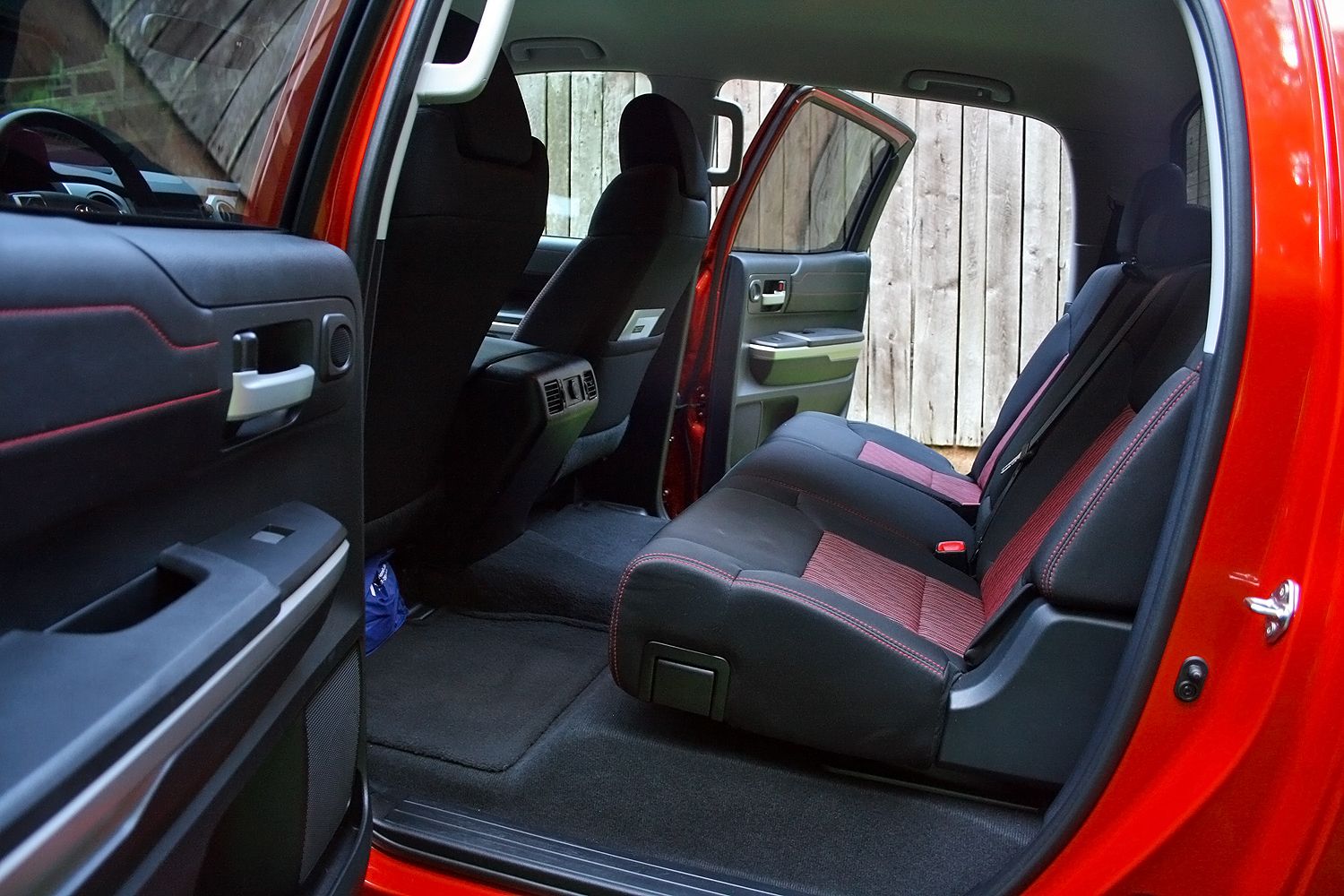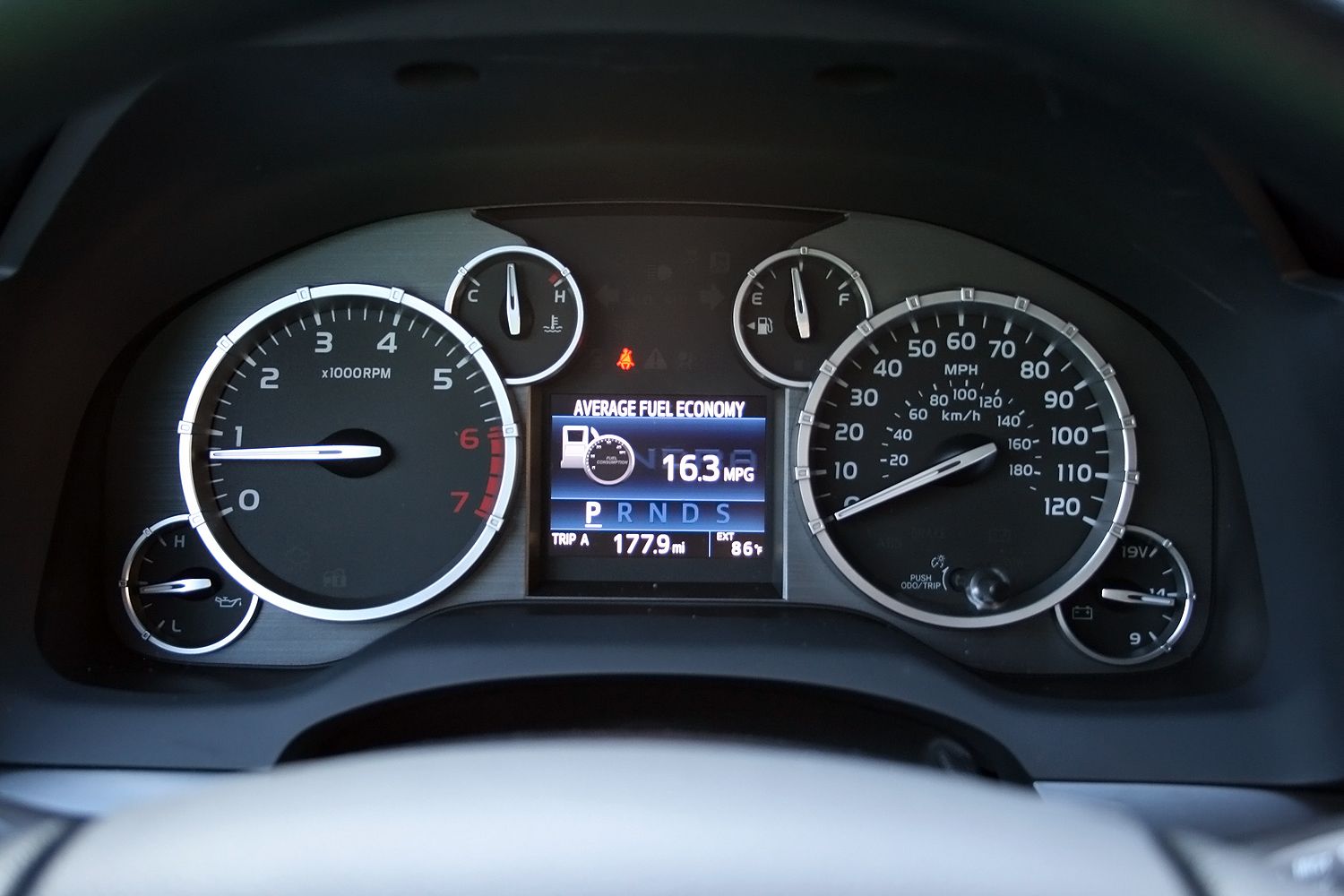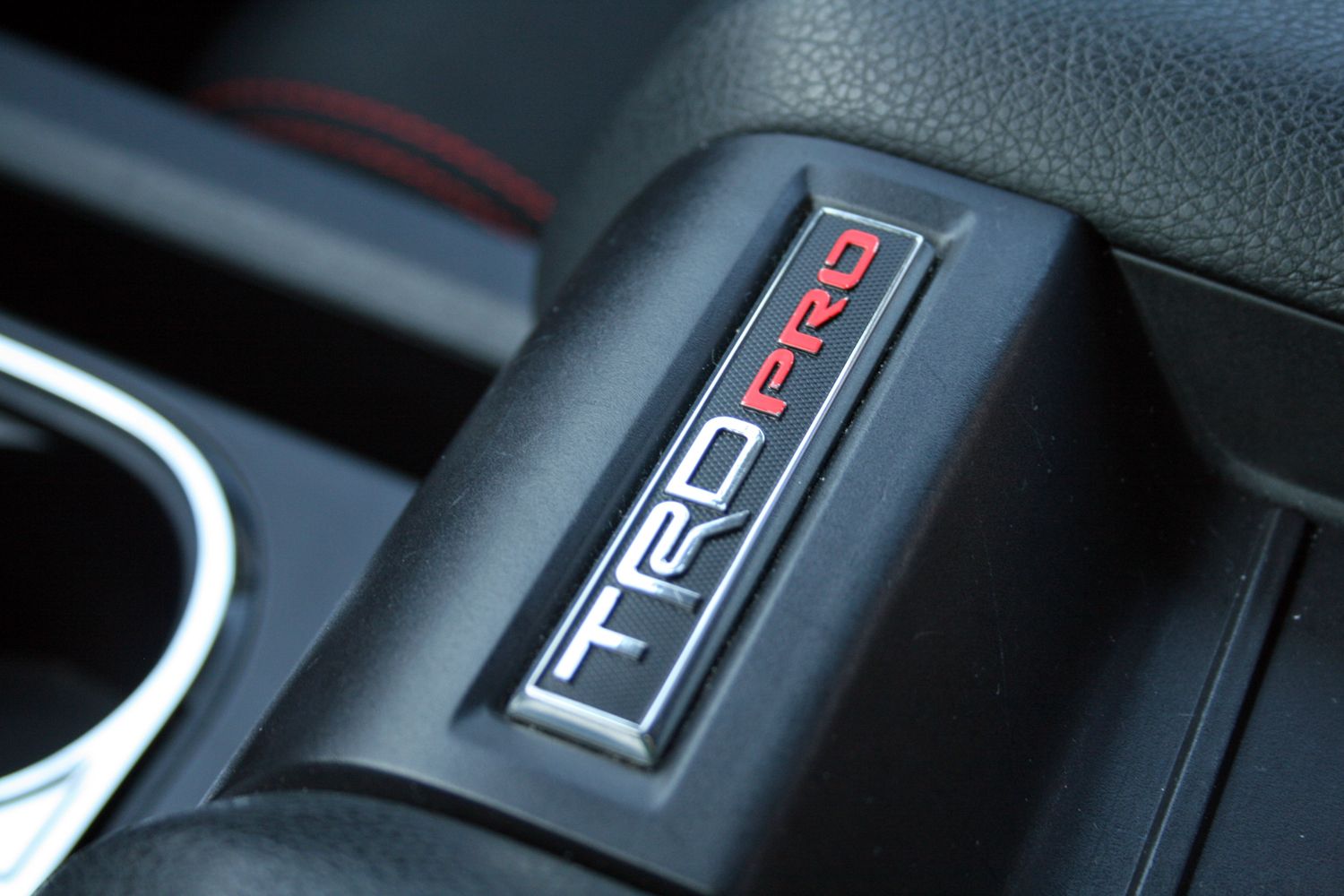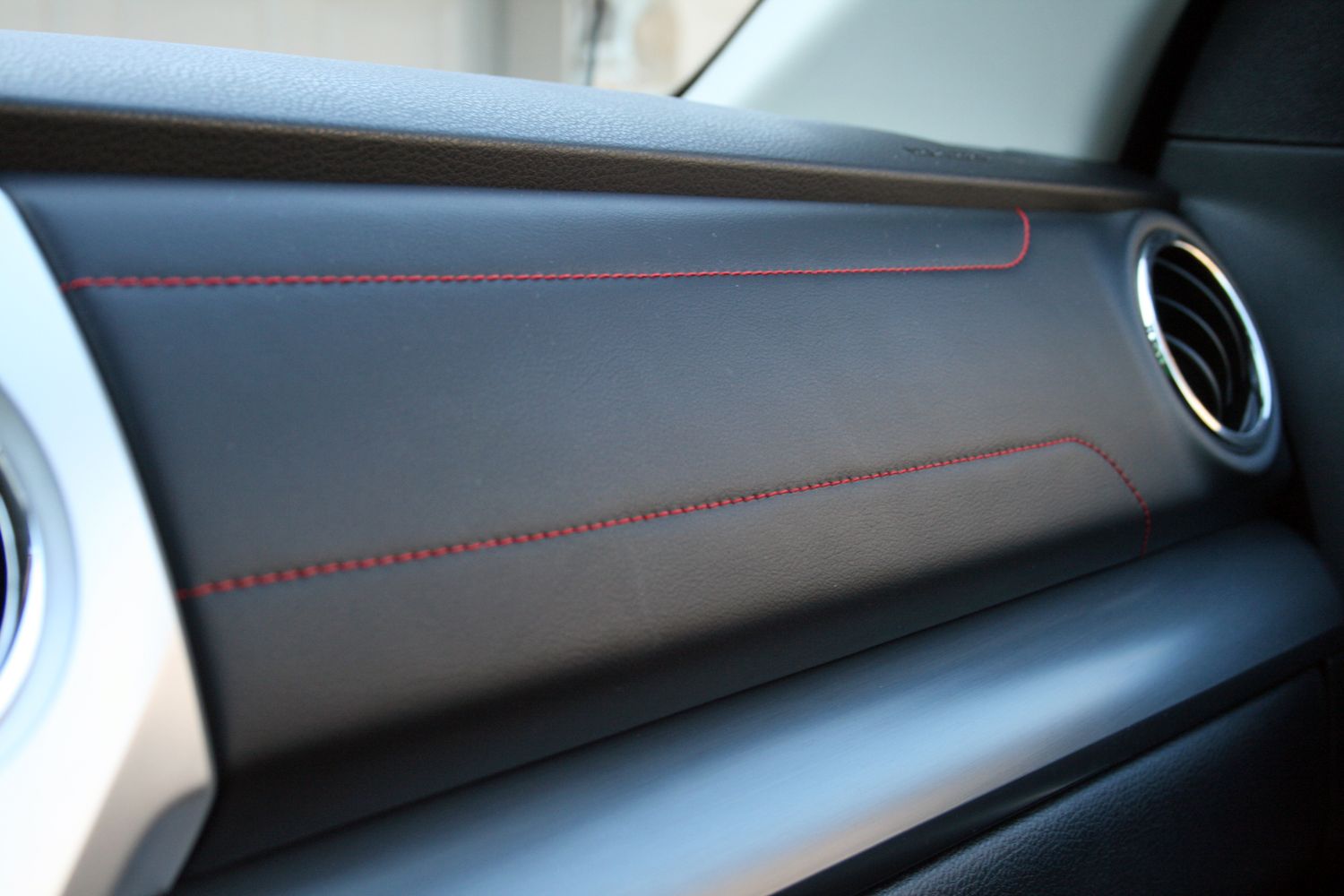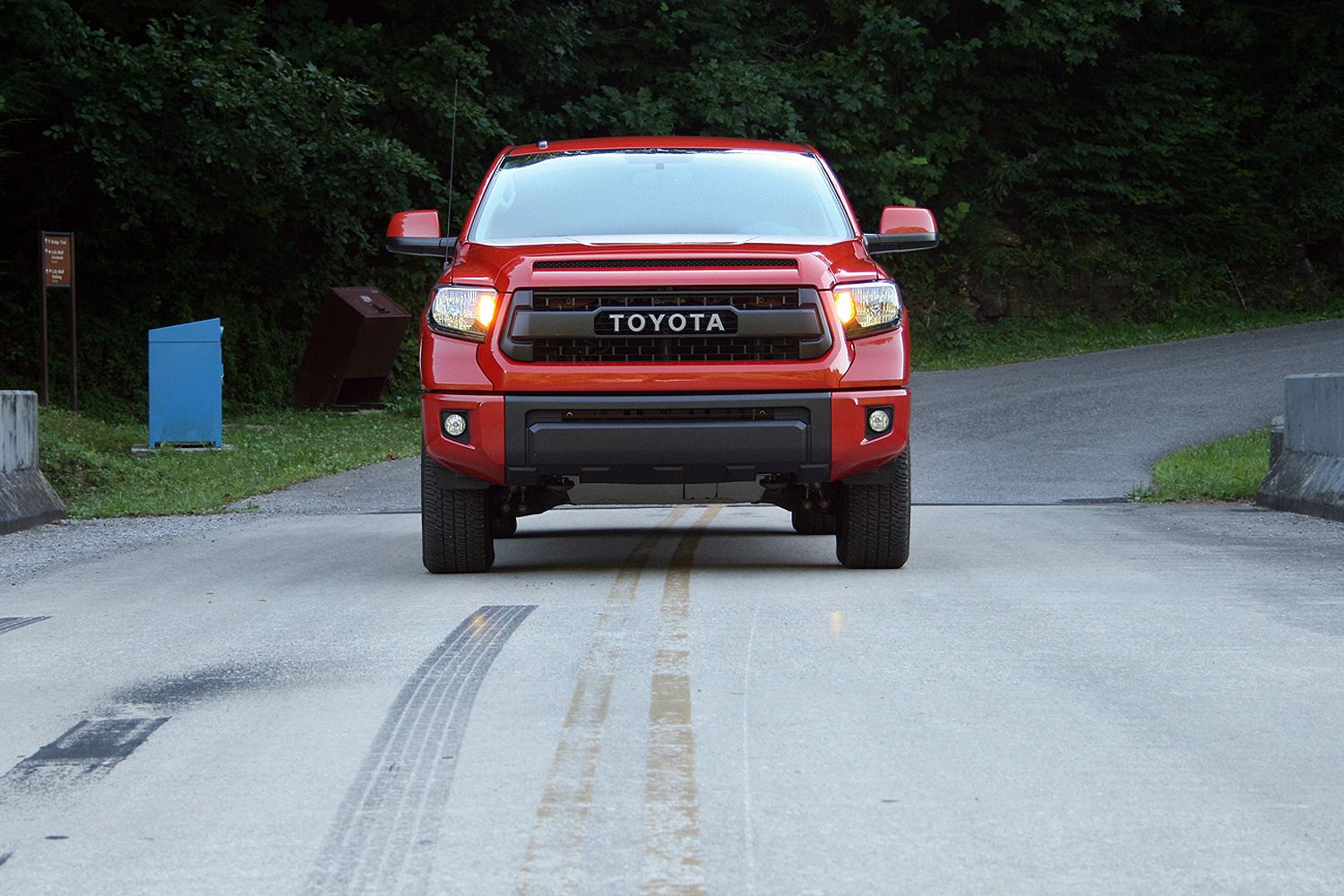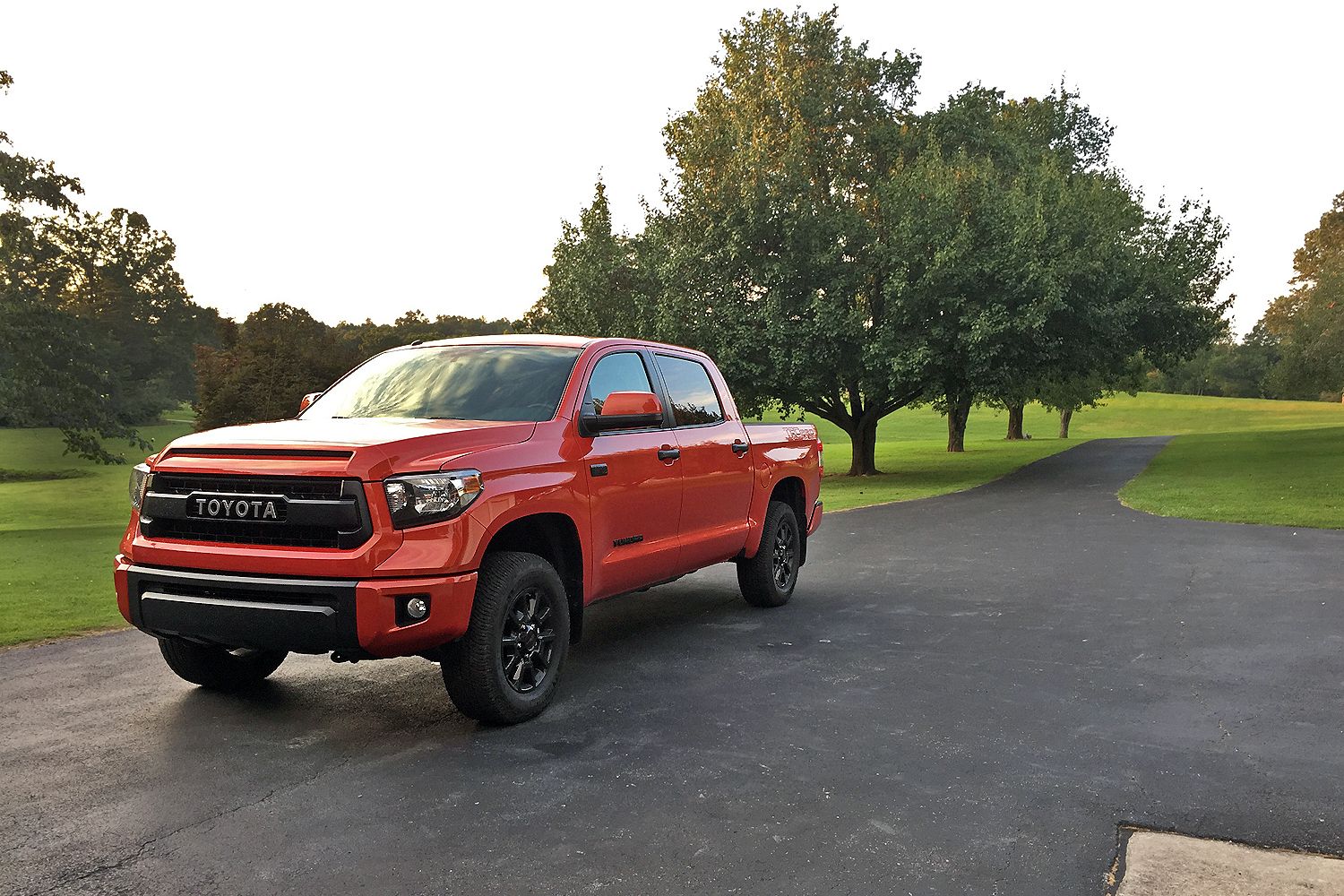The Tundra->ke485 has quietly soldiered on largely unchanged for the better part of a decade, save for the skin-deep refresh that came along in 2014. However the mad scientists and engineers that roam the halls of the Toyota Racing Division have done their own thing and created a beastly off-road package for the 2015 Tundra, along with matching packages for the 2015 Toyota 4Runner TRD and (now aged-out) 2015 Toyota Tacoma TRD.
Known as the TRD Pro edition, the package adds an extensive list of upgrades that transform the Tundra into a factory-tuned desert racer. Remote-reservoir Bilstein shocks, high-performance springs, additional ground clearance, skidplates, tow hooks, and a bevy of cosmetic changes inside and out constitute the bulk of the package. But you already knew that, didn’t you?
Having been on the market since the last quarter of 2014, the Tundra TRD Pro has already made quite a name for itself in the off-road community. Thanks to its stout V-8 that kicks out an impressive 401 pound-feet of torque, the Tundra has enough cojones to power over sand dune and through mud pits with ease. Toyota offers the TRD Pro option on both its Double Cab and CrewMax cabs. Only three paint choices are available and include black, white, and Inferno orange.
Toyota->ke88 recently lent me an Inferno orange Tundra TRD Pro fitted with the larger CrewMax cab configuration and most of the desirable options. I picked the truck up in Atlanta on my way to visit the family farm in the rolling hills of East Tennessee. The trip would prove a fantastic test of the truck’s everyday livability and its prowess tearing down gravel roads and through freshly cut hay fields.
Continue reading for the full driven review
toyota-tundra-trd-pro-driven
- Make: Array
- Model: toyota-tundra-trd-pro-driven
2015 Toyota Tundra TRD Pro - Driven
- Make: Array
- Model: 2015 Toyota Tundra TRD Pro - Driven
- Engine/Motor: V8
- Horsepower: 381 @ 5600
- Torque: 401 @ 3600
- Transmission: six-speed automatic
- [do not use] Vehicle Model: Array
Video Walk-Around
Exterior
There is no missing the Tundra TRD Pro thanks to its Inferno orange paint job and bold, block-lettered grille. The color simply adds gasoline to the flame, though, as the Tundra is already a standout on streets filled with hybrids->ke147 and compact crossovers->ke288.
The noticeable features start up front with that block-lettering grille. “TOYOTA” is spelled out prominently in homage to the original Toyota Land Cruiser FJ-40. The black coloring continues onto the front bumper for added effect. The TRD Pro-exclusive wheels, the door handles, and badges get the same blacked-out coloring. The cargo bed wears stamped TRD Pro logos on its side to match the stamped Tundra logo that comes on every Tundra’s tailgate.
Beyond aesthetics, the Tundra’s exterior is ready for work. Dual tow hooks and a skidplate live below the front bumper. The Michelin tires are conservative yet grippy enough for most off-road terrain, and ground clearance is increased over the standard Tundra.
The front is raised two inches over stock, leveling out the truck. The shocks are upgraded to 2.5-inch remote-reservoir Bilstein units that feature three-stage compression dampening with internal bump stops. TRD-spec coil springs work with the Bilsteins to smooth out rough ground through the double wishbone suspension.
Holding the rear axle in place are conventional leaf springs with 1.25-inch remote-reservoir Bilsteins. Because the standard springs are used, the Tundra doesn’t lose any towing or hauling capacity, allowing it to haul 1,555 pounds in the bed and 9,900 pounds on the hitch.
Interior
Behind the Tundra’s big doors is an interior that’s familiar to Toyota fans. In fact, the TRD Pro package doesn’t change the bones of the Tundra’s interior. There are still plenty of changes and upgrades to be found. For starters, the tight-weave fabric seats have red inserts that contrast the black sides. Red stitching on the seats carries onto the dashboard and door panels as well. A TRD shift knob and TRD Pro logo on the center armrest remind the driver of this particular Tundra’s abilities.
The CrewMax configuration allows for five adults to comfortably fit. Yep, the back seat is wide enough to fit three grown men. It also works wonderfully for two adults and a car seat. Leg room is outstanding and outward visibility is surprising, despite it being the second row. A quick-release lever allows the seat bottoms to fold upward, giving access to a nearly flat load floor.
The driver and front passenger enjoy large bucket seats with good bolstering. They’re comfortable on short drives, but the driver seat starting hurting my back after a couple hours behind the wheel. My wife didn’t have the problem in her seat. Like the seats, everything inside the Tundra is large. The center console could swallow a filing cabinet, the door pockets are big enough for a couple drinks, and headroom is NBA-approved. But perhaps my favorite thing about the Tundra is its roll-down rear window. The extra airflow is downright pleasant with all the windows open.
Ergonomics are good as well, with all the controls in easy reach. The Entune infotainment system is easy to operate and identical to most other Toyota products. The gauge cluster is easy to read at a glance and the HVAC controls couldn’t be simpler to operate. On the down side, there is only one USB port in the entire truck, meaning only one phone can be charged at a time.
Powertrain
Opting for the TRD Pro edition makes the 5.7-liter V-8 come standard. That means the Tundra has a respectable 381 horsepower at 5,600 rpm and a stump-pulling 401 pound-feet of torque at 3,600 rpm. That torque rating beats the 5.3-liter V-8 from General Motors->ke1024 and the 5.0-liter V-8 from Ford->ke31. Only the Ram’s->ke4211 5.7-liter Hemi and GM’s 6.2-liter V-8 have more twist.
The Tundra’s V-8 might be the oldest gasoline truck engine on the market, but it is still full of high-tech features. Both the block and cylinder heads are aluminum and each cylinder has four valves. Both the intake and exhaust sides feature variable valve timing for increased power and better fuel economy. Also standard on the Tundra TRD Pro is a dual exhaust system. Not only does it help the engine breath better, it sounds like the thunderous melody from a 1960s muscle car minus the cam lobe.
Mated to the engine is a six-speed automatic transmission with manual shifting capabilities and a Tow/Haul mode. When the going gets rough, the two-speed, electronically controlled transfer case shifts power from the rear wheels to all four. The T-case has both high- and low-range gears for varying conditions. A simple knob on the dash controls the operation. Out back, the rear differential is packed with low 4.30:1 gears and an automatic limited slip.
Despite the variable valve timing, the Tundra TRD Pro has a thurst for regular unleaded. The EPA rates the truck at 13 mpg city, 17 mpg highway, and 15 mpg combined. During my time, I was able to inch the digital mpg meter up to 17 mpg on the interstate, but it quickly falls with any gratuitous throttle inputs. After a week’s worth of driving, I averaged 15.3 mpg.
|
Fuel Economy |
|
|
MPG City |
13 |
|
MPG Highway |
17 |
|
MPG Combined |
15 |
|
My average MPG |
15.3 |
Driving Impressions
The first noticeable thing behind the wheel is the Tundra’s sheer size especially its width. It drives much larger than its competition. Large side mirrors and big windows help counteract the size, making the Tundra easy to learn its corners. Matching the size is the Tundra’s mighty 5.7-liter V-8. It never left me wanting for power. Full throttle bursts shake the truck side to side, adding to the perception of power. Tack onto that the sound of the dual exhaust, and the Tundra makes for one manly ride.
The TRD Pro suspension offers a compliant ride on even the roughest roads. Body roll is surprisingly well managed in turns and the rear end never felt too light or ready to walk sideways. The steering is decently weighted and has minimal slack on center. Despite the 32-inch tires and off-road suspension, the Tundra tracks down the interstate without a problem, even at 80 mph.
But it’s when the pavement turns to dirt that the Tundra really comes alive. Gravel roads feel paved and open hay fields are traversed without a fuss. The truck is capable of doing much more off road than I was able to subject it to.
Price
The base price for the Tundra TRD Pro starts at $41385. With that comes all the off-road goodies, the three paint options, the 5.7-liter V-8, the dual exhaust, and the double cab configuration. Opting for the larger CrewMax cab with the 5.5-foot bed raises the base price to $46,160.
My tester came with a couple of optional extras, including the paint protection film ($395), bed mat ($139), remote engine starter ($499), and the center console storage tray ($65). Coming standard is the Entune infotainment system with navigation, Bluetooth, and an auto-dimming mirror with HomeLink. With these options added to the base price of $44,000, my tester carried an MSRP of $46,198, including a $1,100 delivery fee.
Competition
2013 Ford F-150 Raptor
The Ford Raptor has been the leader in off-roading among the full-size segment since its launch back in 2010. Now with the all-new 2015 Ford F-150 in dealerships for the 2015 model year, the Raptor has found itself on hiatus until the 2017 model year. Still, the first generation Raptor is the go-to truck for tearing up the Baja. Equipped with Ford’s big 6.2-liter V-8 making 411 horsepower and 434 pound-feet of torque, the Raptor has more than enough power. Remote-reservoir Fox shocks mounted on beefed up control arms and leaf springs give the Raptor its go-anywhere-fast abilities.
Prices for the 2014 model started at $44,995 when new.
Read our full review here.
2015 Ram 1500 Rebel
New for 2015 is the Ram 1500 Rebel. Though Ram says the Rebel does not compete with the Raptor, the comparison is impossible not to make. The truck comes equipped with Bilstein shocks up front and coil springs on its five-link rear suspension. Each corner also gets an air bag, making it possible to raise and lower the truck up to an inch. Ram says the truck is designed to offer increased off-road performance to truck buyers who would normally turn to the aftermarket.
Power comes from the buyer’s choice of the 3.6-liter Pentastar V-6, 3.0-liter V-6 turbodiesel, or the 5.7-liter Hemi V-8. Prices start at $42,995 and go north with options.
Read our full review here.
Conclusion
The Tundra TRD Pro proved to be a fantastic truck to take on vacation. The large cabin provided plenty of room for luggage and a car seat. With the luggage out, the back seat was perfect for hauling family around town or across the mountain. Navigating the dirt paths and gravel roads around the family farm were child’s play, as was a steep hill covered in we grass. The only thing the Tundra struggled at was keeping fuel in its tank. It’s a thirsty beast. Nevertheless, the roar from the 5.7-liter V-8 was rewarding enough to make fill-ups seem worth the cost.
Sure, a full-size truck might not be everyone’s go-to vehicle for a family road trip, but the big Toyota made a strong case for itself.

